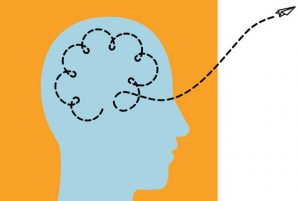
Our minds wander, that is what they do. They are very busy creatures. Even at night when we shut down most of our conscious awareness, our minds still continue playing out dense, symbol-laden versions of our lives, which we then call dreams.
I love my wandering mind. Sometimes. I’m of the belief that the most pleasure one can have is wandering around one’s own mind, or somebody else’s mind, especially as it skips from one thought to the next like a clever, playful, and somewhat precocious child.
We’re very lucky to have minds that do this all the time. Endless, mind-generated entertainment. Say you’re out walking, and see a beautiful spring tulip growing in someone’s garden. Before you know it your mind is using this flower as a springboard for other thoughts. Maybe it presents a thought in the shape of a memory about the last time you saw such a flower, or thoughts about the seasons (“Apart from Corona, such a lovely warm spring we seem to be having”), or the mystery of nature, or maybe another memory, or fantasy about receiving a bunch of flowers from a friend when we’re ill. Lovely, interesting mind stuff.
But the mind can also take another route, especially if our mood is somewhat dampened when we spot that tulip. In fact, with the mind’s inbuilt negativity bias, dark thoughts, even when prompted by a flower, are much more likely than pleasant ones.
How so? Well, maybe the tulip has your mind thinking about how much nicer it might be to have someone there accompanying you on your walk. And so you suddenly you feel a stab of intense loneliness. Or your mind has the thought that your partner hasn’t given you flowers for ages, maybe has never given you flowers, and you feel bitter and upset about it. Or maybe they’re always giving you flowers, but are unwilling to talk about their fears and vulnerabilities with you, and your mind tells you that the flower-giving is a cop-out. If they really loved you, they’d be willing to have the conversations you want to have with them.
Or maybe you feel upset because this flower you’ve spotted in some well-manicured garden indicates that the person who owns the garden has more time or resources than you, and you start to feel envious of them.
Or maybe you wonder why you haven’t got tulips growing at the moment in your own garden, and your mind then helpfully or harshly explains that you love flowers but are somewhat lazy when it comes to gardening, and re-minds you how lazy you are about so many other things, and before you know it, the Inner Critic is unleashed, and giving you a good telling off. Now you are feeling upset and down. And all from a single red tulip you spotted on one of your daily walks!
THE WANDERING MIND IN THERAPY
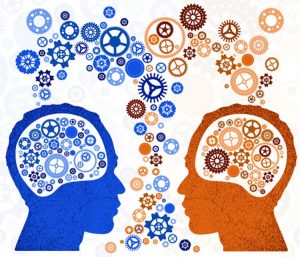
The latter scenario happens quite often in therapy sessions too. We start talking about one thing that is upsetting to us, and before we know it, the mind start darting around and linking up all the other things that are wrong, unfair, or just painful sources of suffering in our lives.
Sometimes, allowing our minds to wander and share their wandering thoughts with someone else who sits and quietly listens to whatever our minds are saying without judgement or too many interruptions, can be really cathartic and comforting.
Sometimes just the mere act of getting it all out into the open, is therapeutic enough for us, gives us enough distance on our thoughts to see them for what they are (thoughts) and so loosen some of their hold on us.
I call these sessions Mind-Dump Sessions, and I think they can be incredibly important when our heads feel stuffed with all the thoughts heads get stuffed with about a whole range of things that are getting us down.
Mind-Dumps lie at the heart of psychoanalysis and what is now known as psychodynamic therapy. Psychodynamic Therapy is the bottled water of psychotherapy (CBT is its coca-cola) – which is to say, most therapy sessions look and sound pretty psychodynamic in tone and content nowadays, and psychodynamic therapy is still mainly what’s taught on psychology and especially psychotherapy MAs like the one I did.
During a Mind-Dump, which Freud called “free-association”, the client lets their mind wander, and the therapist listens in with half an ear, which Freud called “free-floating attention”.
For Freud, the Mind-Dump approach was as much a logistical, and energy-saving strategy as anything else. If you are seeing 8-10 patients a day as clinical psychologist or psychoanalyst, then it’s probably best, for you, the therapist, to listen to someone speaking in this way. Listening really, really closely to someone’s else’s mind can use up a lot of energy, especially if the mind you’re listening to is super-busy and distracted in its wandering, as most minds are.
Listening to someone with free-floating attention however allows the therapists mind to largely glide over what is being said, until something snags its interest. It’s a bit like the attention you give when listening to a podcast whilst doing the housework. You try to follow what’s being fed into your ears, but your mind is still free to wander too, and sometimes it can wander right away from the podcast for 30 seconds or more if the thoughts that are being aired are not entirely riveting or new.
Freud encouraged this wandering, busy, free-floating attention, both in analysts, as well as for his patients. Their job was to just let their minds wander from topic to topic for 50 minutes, with the analyst occasionally making the odd grunt or comment, but by and large letting herself and the individual she is listening to, skate around inside their own wandering minds.
That in a nutshell is the Mind-Dump model, and having had a couple of years of that (as a client) I recognise its many, many benefits and pleasures as well as some of its problems.
THE PROBLEM WITH MIND-DUMPS
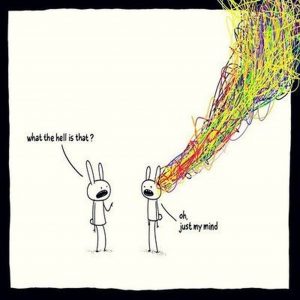 Here’s the chief problem with Mind-Dumps as far as I can tell. Often the content of what we’re sharing in therapy are thoughts that we have had a hundred, if not a thousand times before. And maybe even shared before with other therapists, or family and friends.
Here’s the chief problem with Mind-Dumps as far as I can tell. Often the content of what we’re sharing in therapy are thoughts that we have had a hundred, if not a thousand times before. And maybe even shared before with other therapists, or family and friends.
The problem is that even if the thoughts feel or sound new to our ears, they are often just a version of a thought, or a sequence of thoughts we’ve had before. A kind of “thought-track” (as in an album) or thought-monologue (as in a speech, delivered by a character in the play of our lives) that we’ve rehearsed thousands of times in our own head, and maybe dozens, if not hundreds of times aloud, or in written form (journals, creative writing) or some other way.
So for example, in the hundreds and hundreds of hours of psychodynamic therapy that I had whilst training, my main Stuck and Struggling thought-tracks and thought-monologues were dumped at my therapist’s feet over and over and over again, largely in the standard way in which they’d always been formulated.
As soon as we approached these topics, my mind did what all minds do, which is find its familiar groove on the things that irked and upset it, and play the cued up track about this topic: my existential loneliness, my abandoning father, my frustrations with my current job at the time (teaching), my relationship issues, the difficulty of emigration, the bullying I’d experienced at school, my struggles to fit in at University, and to The Big Bad World in general, and various other themes and narratives that have given shape to my life.
My therapist would show interest, and often have interesting things to say about all of these things, but I’m not sure we ever really got any further than my well-rehearsed mind tracks and her questions and commentary on them. This was fine to some extent. But in other ways not. For what I wanted from therapy then, and still do, for myself, was to be able to process these narratives of my life in a deeper, wiser, more skilful way. Perhaps it’s my own dissatisfaction with standard talking therapy that led to the training I did after my Integrative Psychotherapy MA, focusing more on Mindfulness Based approaches, Schema Therapy, and ACT.
Another thing I noticed when I was a client in therapy, was that I had no problem in playing My Greatest (Mind) Hits again and again, and often felt vindicated, and consoled in some way when I did so. But this consolation rarely lasted for longer than the session itself. Perhaps because during the session, it really helped to let my mind explain to me and the therapist why I was suffering to the extent I was, to have an explanation for all of this, but this brief moment of lucidity vanished as soon as I stepped out of her rooms. The explanations for my suffering, it seemed after a while, were really only the beginning of the process, not the result of it as I had been previously led to believe.
Insight itself did not, at least in my experience, change the way in which I continued to live my life for good or bad in the here and now, moment by moment.
The experiential shift I was looking for, and which I think a lot of people are looking for, seemed to require something more than just letting my busy, wandering mind do it’s completely natural and lovely busy-wandering thing: darting about from topic to topic, often skating around painful thoughts, and speeding up or changing tack when my mind hit on something painful that it wanted to explore. But also didn’t.
SPEED AND URGENCY: THE UPSET MIND
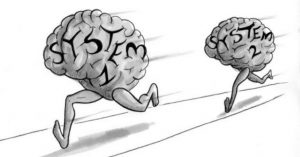
I don’t know about your mind, but when my mind lands on an upsetting topic, my speech usually speeds up to some extent, and I start to feel a deep tension and urgency in my body, as if I might actually burst if I’m not allowed to finish this chain of thought, which of course just leads to the next chain of thought, and the next.
It’s at moments like this, that my mind most hates being interrupted, and will often fight against interruptions from the person I’m talking to, pretending to listen to them whilst just rehearsing the next thing my mind wants, or at that point feels like it really needs to say.
Often the end of a session (if I’m in therapy) feels like an imposition. “No! Don’t cut me off now!” the mind shouts. “I have so much more to say on this topic! In fact, I have a lifetime of pain and thinking about this to share! DON’T STOP ME NOW! Just another minute or two. Or ten. Or twenty!”
As I started working as a therapist, I would often see clients chasing after their own minds in the same way as I did, and still do (!) struggling to keep up with themselves, but now pulling my mind along in their wake.
And here’s where I also discovered why therapists might choose to employ Freud’s instructions to follow their clients with “free-floating attention”, i.e. to let their minds wander along with their clients or patients, for both of us just to surrender to this distracted, wandering mind-dump.
Hopefully, when a mind-dump is happening, as long as the therapist is working on staying attuned to where the other person’s mind is speaking from, and asking a few searching questions, the mind in question will eventually stumble in time on the thoughts it needs to have to feel better or lead a more fulfilling life.
However, as I too became a little more skilful at recognising my own mind states and those of others, I started to feel at times a bit like an ice-skating coach, standing on the sidelines, watching the person who had entrusted me with this task of helping them take care of their minds, carry out a series of deft and intricate mind-manoeuvres one after the other as if that itself was the point of our session.
I would watch with awe the various mind-flips and loops, the Euler, The Salchow, and those magnificent triple Lutzes and Axles. I would tell myself that just being there watching their minds do their stuff was enough, but I don’t think I ever completely bought into that idea.
When our minds are “flipping out” in some way, the knots they sometimes tie themselves into are usually driven by pain and suffering. Sometimes joy and exhilaration, but more often than not some form of suffering. Joyful mind states are not that common in therapy for understandable reasons. And yet, talking in a session, especially when doing a mind-dump, doesn’t necessarily lead us out of misery into something less miserable. Why is that?
ISN’T THERAPY SUPPOSED TO BE FOR TALKING, TALKING, TALKING ABOUT MY THOUGHTS AND EMOTIONS?
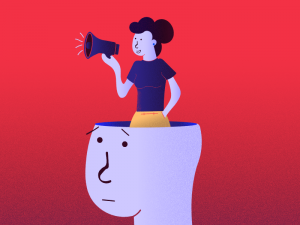
The pain-generated energy which we sometimes call “negative emotions” (fear, anger, sadness) is the electricity of life. This can often be diverted to very useful and helpful problem-solving ideas, creative projects, or channeled into seeking deep, existential paradigms for the ongoing crisis of being human.
Often this will come directly out of a Mind-Dump, those incredible feats of verbal dexterity. But I also noticed as time went by that when I had seen the same flips, and toe-loops, and even those incredible Lutzes and Axles again and again from the same person, I started taking them for granted to some extent. They no longer took my breath away, no longer kept me entranced, as if watching a gripping thriller. Perhaps you have experienced this too yourself when listening to someone else do a Mind-Dump?
It rarely happens when we’re the one mind-dumping though, as our own minds are especially good at getting us deeply fused and hooked into their content.
That said, I’m never completely bored by anything the human mind comes up with. I still think that minds, and human stories, no matter how many times I’ve heard them before, are fundamentally interesting and mysterious. But of course I would think that, having a mind! And especially a mind likes to think and listen to other people thinking.
So even a thought repeated for the 1000th time, like a great song or poem, always presents new tangents for discussion.
And yet, sometimes in a session, I find myself feeling a little bit disengaged from whatever a client is talking to me about, and this I have come to realise is a signal to my mind that their mind had skated off on its own little ice-rink. For both of us, there is still the expectation that having me there on the sidelines, asking the odd question, even if partially engaged with what they’re saying, might somehow produce a different outcome than the last time their mind-stuff spilled out. But I don’t like to feel disengaged and disconnected from someone when they’re talking. Unfortunately though, this can sometimes occur when we’re listening to Mind-Dumps.
I also noticed that some of my clients (though certainly not everybody) started to question whether mind-dump sessions are useful or helpful enough for what they want to get out of therapy, which for many people is some version of:
a) finding ways to deal better with life’s many challenges, and
b) getting that little bit closer to living some version of that rich, full, and meaningful life that we all envisage and struggle for, but also often struggle to put into practice.
How to accomplish this with minds like pinball machines? Minds that wander all over the place as minds often do, bumping into painful thoughts again and again, launching themselves into pirouettes and leaps of distress or fault-finding analysis every time they hit an obstacle?
Are you aware of how much your mind does this? Sometimes, I am, but usually not. Why is that?
ARE MIND-DUMPS A FORM OF AUTO-PILOT THINKING?
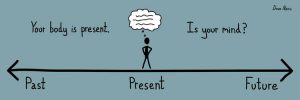
The mind is largely on auto-pilot, it has to be so in order to conserve energy. It does less of this when it’s in flow, as in when I’m counselling, or writing, or reciting my poetry koans, or reading something that I’m really interested in. But the mind is so set on wandering from one thing to the next, that it’s often not in this state of flow at all.
In these autopilot moments, our minds are just doing their mindy-thing, using our mouth to give voice to the mind’s thoughts, jabbering away as fast as we can, hoping that at some point we’re going to alight on a word-formulated notion that will make all our word-formulated problems miraculously vanish, or go away. It can feel when we’re doing this that we are in fact going somewhere, even if the mind is largely going around in circles, that’s fine too. A lot of life is about going around in circles, quite pleasurable circles, and why should therapy be any different?
Unless our auto-pilot minds are flying us to destinations that we find upsetting or problematic that is. Then we may decide to pay a bit more attention to the way they’re flying rather than just the content they’re carrying.
Poor minds. I do feel sorry for them, don’t you? Think of how much we expect from our own hard-working, always-busy, largely auto-pilot-driven minds! We’re continually relying on them to (somehow) come up with insightful and interesting analysis, and hopefully a definitive solution, to every dilemma we face in our uncertain world and more than uncertain lives. And all they have to do this with is thoughts constructed out of words.
w o r d s
Made of little squiggly letters, just like the ones you’re reading right now.
It’s a big burden to place on a fist-sized piece of tofu sitting between our ears, a piece of tofu that was largely “designed” just to keep us alive, as opposed to make our lives more pleasant or easier to get through. No wonder we sometimes, literally, drive ourselves insane with our own wandering, and busy tofu-brains.
That said, mind-dump sessions often hit the spot, and if they are doing so for you, let’s continue in that vein, as this is exactly what your mind needs for now. You can also stop reading this piece if that’s the case, job done 🙂
For this is not a diatribe again Mind-Dumps, far from it. Some of my most enjoyable ways of engaging with others is through a mind-dump, even if I might not hold their attention all the way through. This article itself is a kind of mind-dump, although I’m also trying to keep my wandering mind somewhat on track.
The somewhat circuitous track leading to the following distinction.
TO MIND-DUMP OR NOT-TO-MIND-DUMP?
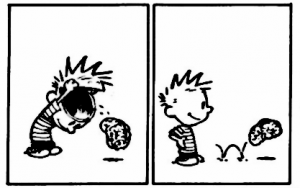 Perhaps before your next session, see where your mind is at with regard to what it needs from the session itself. If it needs to just wander around and do some pain-driven pirouettes and triple Lutzes in the hope of expending some of the suffering energy of your mind out into the room, into someone else’s ears, someone else’s mind, let’s do that!
Perhaps before your next session, see where your mind is at with regard to what it needs from the session itself. If it needs to just wander around and do some pain-driven pirouettes and triple Lutzes in the hope of expending some of the suffering energy of your mind out into the room, into someone else’s ears, someone else’s mind, let’s do that!
Even if it means that my mind might occasionally go into a sort of “free-floating attention” a la Freud, in the process, that’s OK, and 100% kosher as far as psychotherapy is concerned. If you’re ever worried about whether my mind is doing this though, you can always check by asking where my mind is at, and I’ll happily tell you.
But I would also urge you, especially if you are aware that your mind is stuck in one of its loops of suffering, either before the session, or during it, that you maybe alert me to this so that we can try to do something to help your mind (and sometimes even our minds) step out of their well-worn grooves and explore other ways of thinking or feeling.
I would suggest though that this is something that needs to come from you predominantly rather than me dragging your already-struggling mind to the water from which it has no intention of drinking. Because this is something else I’ve learnt after a decade or two of therapising.
MINDS HATE TO BE INTERRUPTED OR TOLD WHAT TO DO

Ongoing, close awareness of my own mind (especially during different forms of focused mind-awareness practice) has taught me that our minds for the most part don’t like to be interrupted or told by anyone, including ourselves, what to do.
When my mind has launched itself into whatever routine it is engaged in working through, often with the hope that by doing so, it’s going to eventually land on THE ANSWER to all my problems, it is deeply reluctant to give ground in any way. Does your mind work like this too sometimes?
The mind at these moments doesn’t seem to be able to recognise, that if thinking was the answer to all our problems, it would probably have reached an answer to those problems by itself by now.
Or maybe it hopes that my mind (i.e. the therapist’s mind) is going to do that for their mind, even though we both have identical human minds? Which is to say that we both have a fairly intelligent, fairly well-read adult human minds. So why haven’t we been able to think our way yet out of every impasse we find ourselves in 🙂
[Answers in our next session, please].
Instead the mind just keeps on whirring away in the hope that it will get there eventually.
And sometimes it does. Sometimes, uninterrupted thinking through many years of weekly mind-dumping sessions succeeds by whatever metric we measure that success by. It’s also such an interesting process that it makes sense to do it for at least 50 minutes a week – at least to me.
But this is also why knowing how our own minds work and how it feels from the inside when our minds are thinking and worrying about things, is really essential. Sometimes a mind-dump is the answer. Sometimes not.
GETTING YOUR MIND ON-BOARD FOR EXPERIENTIAL WORK
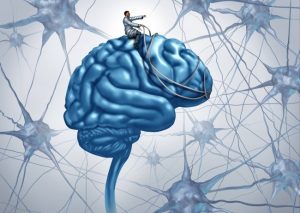
If we are asking our minds to do something different in therapy from what they normally do (wander around, bumping into painful thoughts, which then create more painful thoughts, and more wandering around until the time runs out) we really need to get our minds on board with this. We need to say to our minds, maybe even before our session with the other person (the therapist) something like this:
“Mind, I’d really like to go a bit deeper on this issue today, which may require us utilising some processing techniques which you probably won’t like because they will constrain you, to some extent, constrain your freedom of movement. Just for a while. Maybe for over half the session. Is that OK? But we’re doing this for your own good, yeah? Like the way I sometimes keep my body still so that blood might be drawn from it, or allow another person to give me a massage or some physiotherapy in order to feel better or heal. Hopefully mind, if you allow us to do this together, we might experience something new or different with regard to your well-worn thoughts and inner dialogues/monologues. So might I be able to twist your ‘arm’ dear mind, just for today, to do this with me?”
This is what I’d invite you to do, if you want to invite your own mind to give up on a potentially enjoyable mind-dump for some experiential processing. Experiential processing can also be deeply enjoyable and interesting, but sometimes it isn’t. Sometimes, it’s more like doing some exercise that your body needs, but takes a bit of effort and struggle.
When you negotiate this with your mind in the form of an inner-dialogue, please listen carefully, with kindness and compassion to your own mind’s resistance. Also listen carefully to what your mind says as it reads through the suggestions for focusing/processing practices I’ve shared with you below.
Notice the reasons it gives you for resisting these practices. Try and become as interested in what your mind doesn’t want to do, as what it does. Usually my mind doesn’t want to do stuff because it’s scared or mistrustful of the experience or its outcome. Or because it’s going to take some effort to do. Sometimes mind needs lots and lots of patient inner-dialogue to help them work through this fear so that they can try out new things, which they might even learn to appreciate in time. Patience, patience, patience. Kindness, curiosity, kindness.
When you’re having this inner dialogue with your mind, see if its resistance is mainly about fear of discomfort (“This is new, so unfamiliar, so perhaps best not to try it”) or mistrust (“Why would that work/help?”) or something else.
After having this chat with your mind, YOU (not your mind) might choose, at points in our session, or even for a whole session itself, to override the mind’s natural/default fear of discomfort and change and try out some experiential processing.
We often override our own mind’s fear and mistrust in this way. Otherwise, we’d never give birth to children (the excruciating pain!), or go to a dentist, or risk talking to someone who looks interesting but who might reject us if we approach them. We do some of these things because the outcome or the experience we’re seeking is more valuable to us than staying in the comfort of our own fearful minds. Even if those minds are suffering terribly, there is still some comfort of staying within the well-worn, suffering grooves of what we’ve always done and how we’ve always thought. The great thing about therapy, is that if we treat our minds and each other with respect and kindness, we can’t really go wrong either way. Mind-dump, or Experiential Processing, something useful or helpful will no doubt emerge.
But only you can make this call about what you would like to do with your busy, wandering mind during our sessions, and I will go with whatever decision you make with your mind for your mind.
Because ultimately, it’s your mind, not mine, and you are its boss (at least theoretically) even when it’s treating you more like a skivvy or a whipping boy, driving you relentlessly, or beating you up in the hope that you’ll somehow think or work better or faster, or more pleasurably if you follow that train of thought or another. We’re all riding some kind of Chattanooga Choo Choo of the mind, that’s a given.
WHAT IS EXPERIENTIAL PROCESSING?
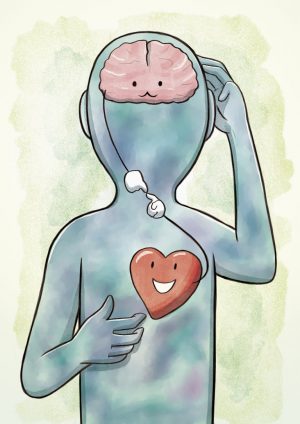
Below I’ve listed some of the ways that I like to engage experientially with my own, as well as someone else’s busy, wandering mind. You will notice that all the processing strategies below have three important aspects to them:
a) EXPERIENTIAL PROCESSING SLOWS THE MIND DOWN
When the mind is upset it speeds up. So even though it is often saying some really important things to us in the process, the delivery is often at such a breakneck speed that we are unable to really “hear ourselves” think, and so process things at a deep, heart-level.
So any experiential practice requires us to first of all find a way to put the brakes on our runaway minds. In my experience, minds really, really, really don’t like this! This is also why our minds often fight against doing things like meditation and yoga.
Imagine you’re driving along at 60 mph, covering a lot ground, wind blowing in your hair, the perfect soundtrack playing on the stereo, feeling free and totally unfettered And then SUDDENLY the sign ahead (for no good reason -as far as our minds are concerned) asks you to slow down to 10 mph, or even 5? Minds don’t like doing this, even if it’s something they sometimes need, or other people need from us.
b) EXPERIENTIAL PROCESSING REQUIRES THE MIND TO FOCUS ON JUST ONE THING
As described above, when we are upset, it’s really hard to focus on one thing. Our minds are often all over the place, and we jump from topic to topic haphazardly, in the hope of alighting on some thought that might make us feel better.
Unfortunately, more often than not, one painful thought leads to another painful thought, which then leads to a chain of painful thoughts that wrap themselves around us like a magician being lowered into a giant glass cube filled with water. We’re about to drown, but our minds are still telling us that as long as we keep wriggling, as long as we keep those flustered and flurried thoughts coming, the “key” might shake itself loose from one of our pockets.
“Throw enough shit at a wall, and some of it will stick,” is often the mind’s mantra (it’s not called a mind-DUMP for nothing). And sometimes this does happen. Which is great when it does. But often the mind just starts drowning in its own misery. This is painful for me to witness as a bystander, and even more painful when one is the owner of the mind in question that is asphyxiating itself on its own thoughts in the hope that thoughts alone are going to help us to escape from the multiple ways in which we suffer.
c) EXPERIENTIAL PROCESSING PRACTICES HAVE A VERY SPECIFIC, TARGETED PURPOSE BEHIND THEM
The mind-dump is a kind of free-wheeling mind state, and minds love this of course, because minds love to be free. This is also why we treasure our minds: they are wonderfully, gloriously free! Free to have nice thoughts, horrible thoughts, scary thoughts, and sexy thoughts, miserable thoughts and transcendent thoughts. They are the ultimate free agents, and so are naturally attracted to laissez-faire, free-wheeling sessions, and free-wheeling therapy. Which also helps to explain why a talking cure created by a German-Jewish neurotic over 100 years ago is still going strong.
Freewheeling, mind-dump session are often intensely interesting, even “fun” in a way (they are for me). So even when the thread of what we’re saying, or where we’re “going” with any train of thought, may be unclear, it’s hard not to feel we’re going somewhere. And maybe we are? Who knows.
Experiential Processing doesn’t just cross its fingers and hope for the best. There should always be a carefully conceptualised and mutually understood reason for doing any experiential processing.
If you’re not sure what the purpose of any of the practices below are, please always ask me. Why would your mind agree to doing something if it can’t be convinced (to some extent), that there is a good reason for doing so? None of us like paying our taxes, but there is a well-argued necessity behind taxation, and if we are patient and explain to our minds why we need to painfully give away some of our hard-earned cash, we can sometimes get them to agree. If not, fortunately for all of us, there are also pragmatic and somewhat dispassionate institutions (HMRC) who enforce this necessity whether our minds like it or not.
So even if many of the suggestions below may feel at first unnatural, or uncomfortable, or anxiety-provoking, a well-informed mind can more often than not get behind the most challenging tasks. But I’m not the HMRC, and would never enforce or force experiential processing on anyone. If you feel they would be helpful though, please request we do some of these in your next session. If not, let’s continue with more freewheeling, psychodynamic sessions, which I really love doing too.
SOME EXAMPLES OF EXPERIENTIAL PROCESSING
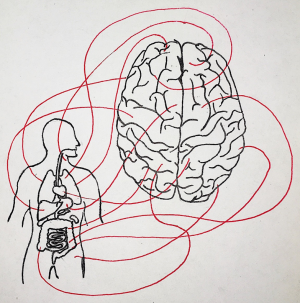
Briefly, here are a few examples of some Experiential Processing Practices that I like to use with myself and with clients when we’re doing something other than mind-dumps. I haven’t explained these in great detail below, as I think it’s always better to chat about each process before we embark on it, so that we can also take into consideration your mind’s resistance to the process, and make changes in order to accomodate your unique and interesting mind, but here’s the gist of them:
1) Hypnosis/Guided Meditations: I am not a trained hypnotherapist, but I have been trained in providing therapeutic guided meditations, and in doing this training, I discovered that there isn’t a huge difference between the two. Both rely on the therapist guiding the client into a light trance state, where the mind is more open to different perspectives and new experiences.
2) Chair Dialogues: This is where we take different parts of the mind, parts that are often in conflict with each other, and get them to talk to each other, and acknowledge each other’s struggles in order to build greater cohesion and team-work between the different parts of the psyche.
3) Visualisations: This is a great way of exploring difficult past experiences, and trying out diffrent ways of interacting with painful memories as well as painful mind states.
4) Unhooking/uncoupling from a Mind Stuck in a Painful Loop: Because minds do this so often, there are hundreds of strategies for helping our minds to unhook from thoughts that are not helping us.
5) Eye Movement Desensitization and Reprocessing (EMDR): EMDR is another wonderful way of going deep into processing and making peace with a distressing or traumatic past or present event.
6) One on One Processing/Focusing: This is another way of slowing down the mind and giving us space for deep reflection and feeling into areas of our experience where we don’t often go. The therapist will often signal to the client in the midst of their mind-dump (perhaps by holding up a pencil) that s/he has spotted a place of suffering which the mind is wanting to get away from, perhaps by shifting topic just as it alights on the nub of the pain. The client will then put brakes on her mind for a few minutes so that the painful thought can be engaged with in the body in order to process it more fully. Often this is done by using R.A.F, or something similar (see below).
7) R.A.F: This process, based on Tara Brach’s R.A.I.N helps the mind to come to terms with overwhelming thoughts and feelings so that we can focus on doing something meaningful or helpful to our lives instead.
This is not a comprehensive list. There are hundreds of ways of doing experiential processing, and most of the psychology that has been developed post-Freud is focused on these practices, especially in the last 50-60 years.
I look forward to hear what you and your mind have in store for us in our next session.
A good old-fashioned Mind-Dump? Great!
Some experiential processing? Wonderful.
Thanks for reading 🙂
 Start by-hearting poems and soon you’ll find yourself in a conversation with someone on Twitter wanting to know what technique you’ve been using to commit your 12,000 words of verse to memory.
Start by-hearting poems and soon you’ll find yourself in a conversation with someone on Twitter wanting to know what technique you’ve been using to commit your 12,000 words of verse to memory. Of all the memorisation techniques out there, MoL doesn’t seem especially useful when it comes to learning poetry. Not even Akira Haraguchi, who has memorised over 100,000 digits of pi uses MoL. Instead he turns those 100,000 digits into a kind of poem! He does this by associating each number with a syllable and then creates poem-like narratives from the words produced by those syllables.
Of all the memorisation techniques out there, MoL doesn’t seem especially useful when it comes to learning poetry. Not even Akira Haraguchi, who has memorised over 100,000 digits of pi uses MoL. Instead he turns those 100,000 digits into a kind of poem! He does this by associating each number with a syllable and then creates poem-like narratives from the words produced by those syllables. 
 Thomas’s language is pared down to the bone: it is taut, and wiry and matter-of-fact. You see this especially in “and gone my way / and forgotten it”. The discursive mind wants to add other words to these two clauses, perhaps repeating the auxiliary verb “have” in the first line alongside an adverb to make “and have gone on my way”. The mind is always doing this when learning poems: coming up with more fleshed-out, sociably padded additions (“and forgotten about it”?). The poem reminds its learner again and again, this one certainly does, that it is not a Barbie Doll or Action Man to be dressed up or prettified, but rather exists as a Hepworth or Moore, or Giacometti statue exists: with only the most necessary, elemental contours present to us. Which works especially well for this poem as so much of it is about working out what really matters in our life: those transitory but intrinsically meaningful illuminations which disturb, often serendipitously, the grinding mundanity of being alive.
Thomas’s language is pared down to the bone: it is taut, and wiry and matter-of-fact. You see this especially in “and gone my way / and forgotten it”. The discursive mind wants to add other words to these two clauses, perhaps repeating the auxiliary verb “have” in the first line alongside an adverb to make “and have gone on my way”. The mind is always doing this when learning poems: coming up with more fleshed-out, sociably padded additions (“and forgotten about it”?). The poem reminds its learner again and again, this one certainly does, that it is not a Barbie Doll or Action Man to be dressed up or prettified, but rather exists as a Hepworth or Moore, or Giacometti statue exists: with only the most necessary, elemental contours present to us. Which works especially well for this poem as so much of it is about working out what really matters in our life: those transitory but intrinsically meaningful illuminations which disturb, often serendipitously, the grinding mundanity of being alive. This is what it feels like (from the inside) to learn by heart a poem that you love. Perhaps, not by mistake, all those ecstatic YESes start sounding like the soundtrack to a disincarnate porn film. And maybe this is not a glib analogy. For just as evolution has shaped us to feel most apropos (literally, to purpose) when we are feeding the animal body, fucking or being fucked with the animal body, moving it in pursuit or play, so the “treasure” of committing words to the heart, words that are closely in sync with our own experience, and maybe even numbers as in Haraguchi’s pi-quest, feels very much on par with the Peak Experiences of both transcendental religious worship and sex, as sketched out by Maslow about 50 years ago.
This is what it feels like (from the inside) to learn by heart a poem that you love. Perhaps, not by mistake, all those ecstatic YESes start sounding like the soundtrack to a disincarnate porn film. And maybe this is not a glib analogy. For just as evolution has shaped us to feel most apropos (literally, to purpose) when we are feeding the animal body, fucking or being fucked with the animal body, moving it in pursuit or play, so the “treasure” of committing words to the heart, words that are closely in sync with our own experience, and maybe even numbers as in Haraguchi’s pi-quest, feels very much on par with the Peak Experiences of both transcendental religious worship and sex, as sketched out by Maslow about 50 years ago. 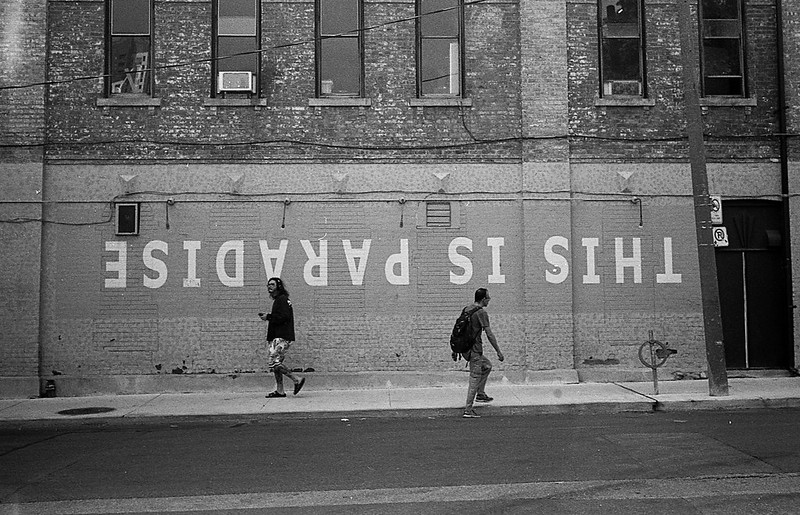

 This excerpt from Yuval Noah Harari’s wonderful book Sapiens manages to distil a great deal of wisdom and discernment about our quixotic quest for feeling good. I think it also points to the challenges that we face as psychotherapists in working with clients’ assumptions (which are also our own!) about striving for happiness and well-being: highlighting how these assumptions have fundamental cultural and historical foundations which we rarely question, so intrinsic are they to the symbolic worlds in which we live.
This excerpt from Yuval Noah Harari’s wonderful book Sapiens manages to distil a great deal of wisdom and discernment about our quixotic quest for feeling good. I think it also points to the challenges that we face as psychotherapists in working with clients’ assumptions (which are also our own!) about striving for happiness and well-being: highlighting how these assumptions have fundamental cultural and historical foundations which we rarely question, so intrinsic are they to the symbolic worlds in which we live.  “Last week my friend Mishka and I, out of idle curiosity and a wistful nostalgia for a popular sedative of the 1970s that neither of us ever even got the opportunity to resist the temptation to take, conducted an Internet search for “do they still make ’ludes.” Before we could finish typing the words do they the search engine autofilled: still make quaaludes. I felt a fond affinity for all depraved humanity.
“Last week my friend Mishka and I, out of idle curiosity and a wistful nostalgia for a popular sedative of the 1970s that neither of us ever even got the opportunity to resist the temptation to take, conducted an Internet search for “do they still make ’ludes.” Before we could finish typing the words do they the search engine autofilled: still make quaaludes. I felt a fond affinity for all depraved humanity. This isn’t exactly schadenfreude; it’s something more complicated for which, as far as I know, there isn’t a German compound, but if there were it’d be something like Mitleidfreude, compassion-joy—compassion in the literal sense of suffering with. It’s the happiness, or at least the consolation, of knowing that things are tough all over. The other morning I heard the guy in the apartment next to mine utterly lose his shit: screaming obscenities, venting insane rage in the way that people only do when they’re yelling at inanimate objects, a tone I know well. Shortly afterward he and I both left the building at the same time, and I saw him standing on the subway platform, to all appearances just another bored commuter waiting for the L train. I alone knew that five minutes earlier he had been out of his mind with psychotic rage. Then I realized that this might well be true of everyone else on the platform. It’s heartening to know that everyone else is doing as badly as I am—all of us secretly screaming, pooping and weeping, googling ’ludes.
This isn’t exactly schadenfreude; it’s something more complicated for which, as far as I know, there isn’t a German compound, but if there were it’d be something like Mitleidfreude, compassion-joy—compassion in the literal sense of suffering with. It’s the happiness, or at least the consolation, of knowing that things are tough all over. The other morning I heard the guy in the apartment next to mine utterly lose his shit: screaming obscenities, venting insane rage in the way that people only do when they’re yelling at inanimate objects, a tone I know well. Shortly afterward he and I both left the building at the same time, and I saw him standing on the subway platform, to all appearances just another bored commuter waiting for the L train. I alone knew that five minutes earlier he had been out of his mind with psychotic rage. Then I realized that this might well be true of everyone else on the platform. It’s heartening to know that everyone else is doing as badly as I am—all of us secretly screaming, pooping and weeping, googling ’ludes. But, if you’re lucky, you graduate up the Maslovian pyramid to increasingly better problems, until eventually you get to confront the insoluble problem of being a person in the world. Even if we were someday to solve all our problems of economics and governance, people would still be unlucky in love, lonesome and bored, and lie awake worrying about the future and regretting stupid things they said in middle school. Utopia will still have forms to fill out, passive-aggressive bureaucrats, broken pipes and cavities, taxes, ads, assholes and bad weather. Time will pass without mercy. We will die. It will suck.
But, if you’re lucky, you graduate up the Maslovian pyramid to increasingly better problems, until eventually you get to confront the insoluble problem of being a person in the world. Even if we were someday to solve all our problems of economics and governance, people would still be unlucky in love, lonesome and bored, and lie awake worrying about the future and regretting stupid things they said in middle school. Utopia will still have forms to fill out, passive-aggressive bureaucrats, broken pipes and cavities, taxes, ads, assholes and bad weather. Time will pass without mercy. We will die. It will suck. What to do when you love
What to do when you love  I often think about Kim learning that Seuss poem, line by line, day after day, week after week. Did she learn it to recite at a special party for a friend perhaps? Was this her
I often think about Kim learning that Seuss poem, line by line, day after day, week after week. Did she learn it to recite at a special party for a friend perhaps? Was this her  I understand all this, and yet, I still find myself crossing the road to avoid these sections, as Willie does himself when Sam hovers into view. Can’t we just stay in the weird, heady realms of abstract language, in metaphor, and analogy where the rest of the poem resides? That lonely,” telephoneless, blue / Green crevasse” of our own heads, where we too “can’t get out”, other than through language, which lets us down with its ready-made phrases and silence in the face of ineffable suffering or joy?
I understand all this, and yet, I still find myself crossing the road to avoid these sections, as Willie does himself when Sam hovers into view. Can’t we just stay in the weird, heady realms of abstract language, in metaphor, and analogy where the rest of the poem resides? That lonely,” telephoneless, blue / Green crevasse” of our own heads, where we too “can’t get out”, other than through language, which lets us down with its ready-made phrases and silence in the face of ineffable suffering or joy? What makes Malcolm Mooney’s plight so moving to me? Many things: his attempt to trail some language, slug-like, across a blank page, which still remains blank even after he has smeared his weary words over it – a literary version of
What makes Malcolm Mooney’s plight so moving to me? Many things: his attempt to trail some language, slug-like, across a blank page, which still remains blank even after he has smeared his weary words over it – a literary version of  It is this tension between risky, vulnerable connection and a safer insularity that makes this poem so moving. Graham struggled, as we all do, with the former. In a letter he wrote from the orthopedic ward of the Royal Cornwall Infirmary to Moncrieff Williamson after a drunken fall (“I walked 5 miles into St Ives to attend a birthday party and coming home I managed (don’t ask me how) to fall off a roof 30 feet and land on concrete”), he relates: “All Art is the result of trying to say to an other one exactly what you mean. Because we are all each so different from each other inside (different even from good friends we think we are extremely sympathetic to), one of the things we try again and again is to establish communication.What a stuffy pompous lecture. FINIS.”
It is this tension between risky, vulnerable connection and a safer insularity that makes this poem so moving. Graham struggled, as we all do, with the former. In a letter he wrote from the orthopedic ward of the Royal Cornwall Infirmary to Moncrieff Williamson after a drunken fall (“I walked 5 miles into St Ives to attend a birthday party and coming home I managed (don’t ask me how) to fall off a roof 30 feet and land on concrete”), he relates: “All Art is the result of trying to say to an other one exactly what you mean. Because we are all each so different from each other inside (different even from good friends we think we are extremely sympathetic to), one of the things we try again and again is to establish communication.What a stuffy pompous lecture. FINIS.”  I like these (more hopeful?) words by Neil Corcoran in his essay on Graham in “English Poetry Since 1940” where he remarks that Graham’s “solipsism is mitigated by the sense that consciousness becomes most alive in these written exchanges between writer and reader, that the most alert self-consciousness may be created and shared within the poem’s language, so that the poem is always dialogue, community, intertext, ‘The longed-for, loved event, / To be by another aloneness loved”.”
I like these (more hopeful?) words by Neil Corcoran in his essay on Graham in “English Poetry Since 1940” where he remarks that Graham’s “solipsism is mitigated by the sense that consciousness becomes most alive in these written exchanges between writer and reader, that the most alert self-consciousness may be created and shared within the poem’s language, so that the poem is always dialogue, community, intertext, ‘The longed-for, loved event, / To be by another aloneness loved”.” 
 Red please: maybe a Rioja, a Primitivo or something equally gutsy. Strip away the almost 10,000 year of vinoculture and we see the substance, like many that follow, as predominantly a time-dissolver and a pain-killer. It is also a self-cure that takes us beyond “the two worlds” of oppositional valence, such as
Red please: maybe a Rioja, a Primitivo or something equally gutsy. Strip away the almost 10,000 year of vinoculture and we see the substance, like many that follow, as predominantly a time-dissolver and a pain-killer. It is also a self-cure that takes us beyond “the two worlds” of oppositional valence, such as  The part of London where I live became very Polish in the aughts and then Romanian in the last 5 – 10 years, so we are all now connoisseurs of the East-European beers that have rapidly taken over in price and quality the usual Stella-Carlsberg-Budweiser triumvirate to be found in all cornershops. The East-European snacks that are also sold alongside the beers are not particularly good though, tasting often of sawdust and poverty, but the beer from these ex-communist countries is fantastic: Timisoreana, Tyskie, Zywiec, Lech, and others.
The part of London where I live became very Polish in the aughts and then Romanian in the last 5 – 10 years, so we are all now connoisseurs of the East-European beers that have rapidly taken over in price and quality the usual Stella-Carlsberg-Budweiser triumvirate to be found in all cornershops. The East-European snacks that are also sold alongside the beers are not particularly good though, tasting often of sawdust and poverty, but the beer from these ex-communist countries is fantastic: Timisoreana, Tyskie, Zywiec, Lech, and others.  For the tonic water, can I have mine with the
For the tonic water, can I have mine with the  I eat fewer of these than I used to. I once had a half-a-packet-a-day chocolate digestives habit. Occasionally I’ll allow myself some fig rolls, or a small pack of shortbread which I’ll devour over the course of two days, but for the most part, I dreamily walk down the biscuit aisle in a state of self-denial. It is an enchanted kingdom that I rarely visit. If I want a biscuity snack, I’ll slather sugar-flavoured-fruit (jam) onto some crackers, or honey: that magical substance transmogrified through the digestive systems of bees. Floral vomit. Honey is bee vomit. You know that, right?
I eat fewer of these than I used to. I once had a half-a-packet-a-day chocolate digestives habit. Occasionally I’ll allow myself some fig rolls, or a small pack of shortbread which I’ll devour over the course of two days, but for the most part, I dreamily walk down the biscuit aisle in a state of self-denial. It is an enchanted kingdom that I rarely visit. If I want a biscuity snack, I’ll slather sugar-flavoured-fruit (jam) onto some crackers, or honey: that magical substance transmogrified through the digestive systems of bees. Floral vomit. Honey is bee vomit. You know that, right?  Even though I am a vegetarian and shudder at the idea (ethically, but also on a physical, disgust level) of eating a substance made from the mashed up bones of cattle then mixed with sugar and flavourings, I avoid that part of my brain when stealing from the pick-and-mix at the supermarket. To buy it would be to make official the fact that I am eating something that I morally and digestively abhor. It’s like the kosher-following Jew who only eats bacon when it’s hidden in some kind of bun and served to him by an anonymous, untraceable third party.
Even though I am a vegetarian and shudder at the idea (ethically, but also on a physical, disgust level) of eating a substance made from the mashed up bones of cattle then mixed with sugar and flavourings, I avoid that part of my brain when stealing from the pick-and-mix at the supermarket. To buy it would be to make official the fact that I am eating something that I morally and digestively abhor. It’s like the kosher-following Jew who only eats bacon when it’s hidden in some kind of bun and served to him by an anonymous, untraceable third party.  The love affair is more or less over. It works now as a memory-repository, an extension for my brain, and something to fidget with. Fairly often I will sit flicking between apps, just opening and closing them down, in the hope that something, or someone will say something interesting or engaging aimed directly at me. This happens fairly rarely, but then I don’t really say anything interesting and engaging directed at a specific individual myself either. So it’s not like I’m actively inviting this sort of social engagement. Sometimes though I broadcast a thought or an essay like this one into the river of social media, so as to hear myself speak, but also for fear of not having a voice. This is a sufficient salve for the former need, and insufficient for the latter. I don’t have enough followers to have a voice – about 10,000 seems to be the point where one starts being noticed and talked about, which nowadays means retweeted.
The love affair is more or less over. It works now as a memory-repository, an extension for my brain, and something to fidget with. Fairly often I will sit flicking between apps, just opening and closing them down, in the hope that something, or someone will say something interesting or engaging aimed directly at me. This happens fairly rarely, but then I don’t really say anything interesting and engaging directed at a specific individual myself either. So it’s not like I’m actively inviting this sort of social engagement. Sometimes though I broadcast a thought or an essay like this one into the river of social media, so as to hear myself speak, but also for fear of not having a voice. This is a sufficient salve for the former need, and insufficient for the latter. I don’t have enough followers to have a voice – about 10,000 seems to be the point where one starts being noticed and talked about, which nowadays means retweeted.
 I am telling an African-American poet about my love of Wallace Stevens when she gently wonders what my thoughts are on Stevens’ racism. At the 1952 National Book Awards banquet, Stevens seeing Gwendolyn Brooks arriving at the ceremony allegedly said, “Who let the coon in?”. He also referred to his own poetry as “like decorations at a nigger’s funeral.” And that’s just for starters.
I am telling an African-American poet about my love of Wallace Stevens when she gently wonders what my thoughts are on Stevens’ racism. At the 1952 National Book Awards banquet, Stevens seeing Gwendolyn Brooks arriving at the ceremony allegedly said, “Who let the coon in?”. He also referred to his own poetry as “like decorations at a nigger’s funeral.” And that’s just for starters. Because that is who wrote the Bible, red-faced homophobic fundamentalist preacher man: a flawed, pint-sized human being who probably wouldn’t, orcouldn’t say boo to a ghost. A little man belonging to a small tribe of monotheistic wanderers who thought: “Because I feel so small and insignificant, what can I do to exalt myself and my tribe above all others tribes?”
Because that is who wrote the Bible, red-faced homophobic fundamentalist preacher man: a flawed, pint-sized human being who probably wouldn’t, orcouldn’t say boo to a ghost. A little man belonging to a small tribe of monotheistic wanderers who thought: “Because I feel so small and insignificant, what can I do to exalt myself and my tribe above all others tribes?” I often tell the story of my exile at the age of 15 from my homeland (my childhood Garden of Eden?) as a tragic one which impacts me to this day in areas where I struggle the most, especially those to do with social confidence. But I’m also aware, and not devaluing in any way, the difficulty of that migration. Indeed my tragic story could be reconfigured as a comic one or as a hopeful, life-affirming bildungsroman. I’m working on those versions, thought my mind still gravitates towards the Tragic Version of events – minds seem to have a habit of doing that.
I often tell the story of my exile at the age of 15 from my homeland (my childhood Garden of Eden?) as a tragic one which impacts me to this day in areas where I struggle the most, especially those to do with social confidence. But I’m also aware, and not devaluing in any way, the difficulty of that migration. Indeed my tragic story could be reconfigured as a comic one or as a hopeful, life-affirming bildungsroman. I’m working on those versions, thought my mind still gravitates towards the Tragic Version of events – minds seem to have a habit of doing that.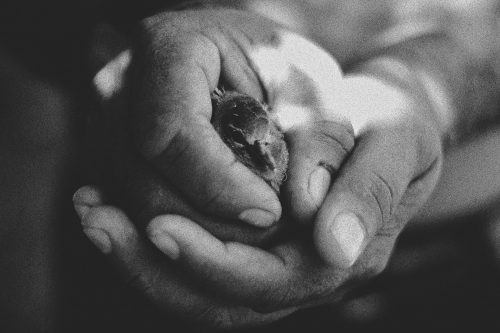 Poetry, perhaps like no other art form,
Poetry, perhaps like no other art form, 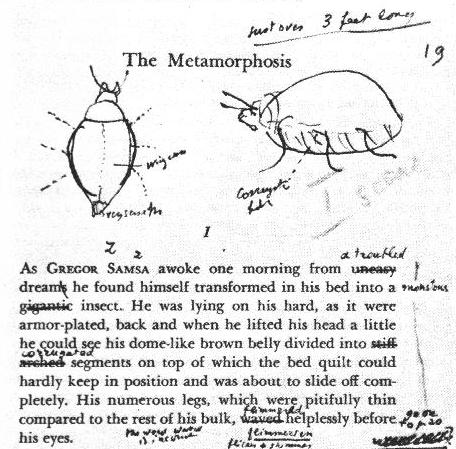
 And the only way I know for doing this, is to have these 62, and counting,
And the only way I know for doing this, is to have these 62, and counting,  I was born and received my primary education in South Africa, emigrating to the UK in 1986 at the age of 15. After University, I worked in Italy for a number of years whilst also attempting to write a number of (unpublished) novels 🙂
I was born and received my primary education in South Africa, emigrating to the UK in 1986 at the age of 15. After University, I worked in Italy for a number of years whilst also attempting to write a number of (unpublished) novels 🙂
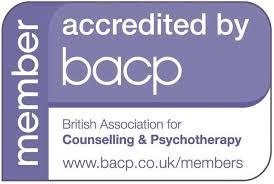

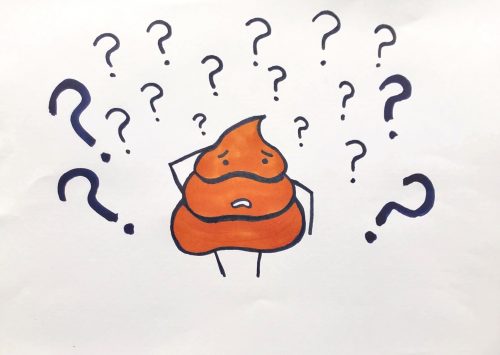

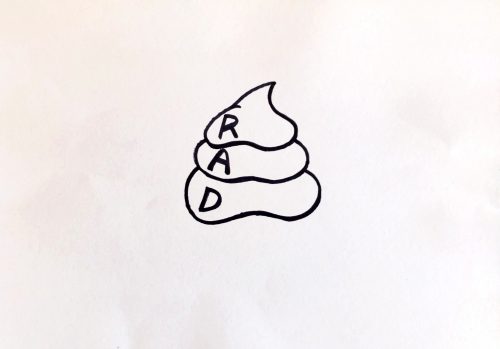
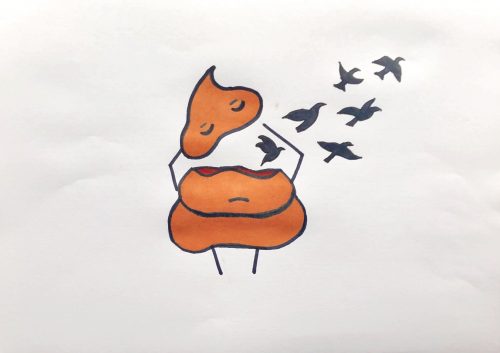
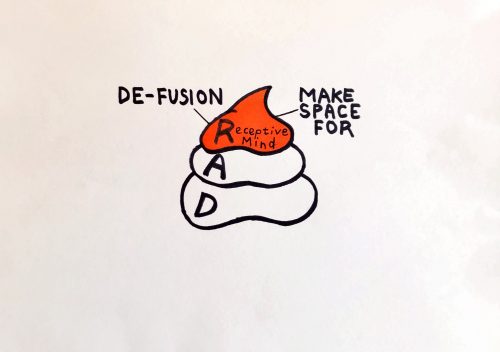
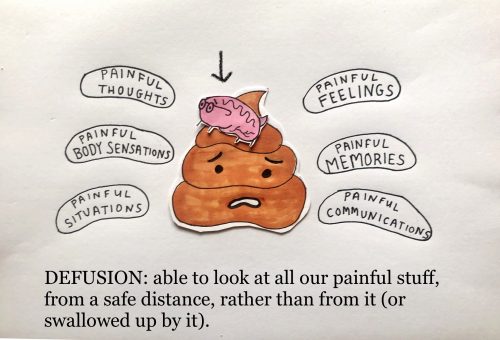
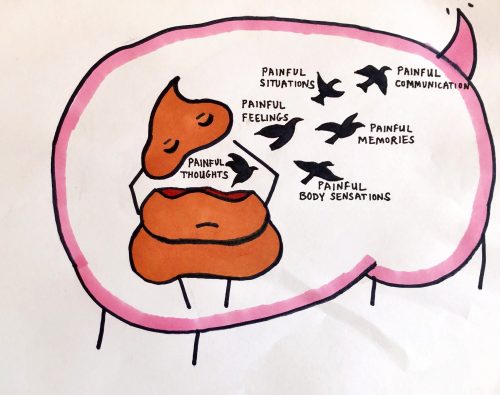
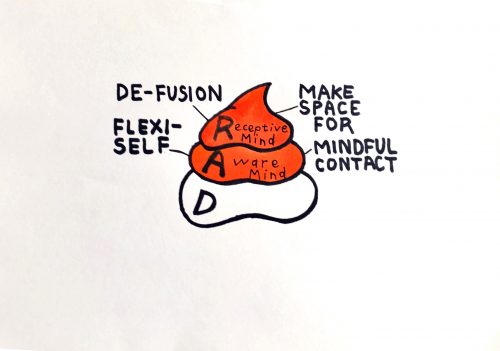
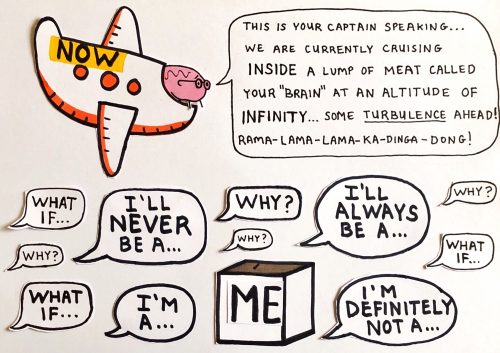
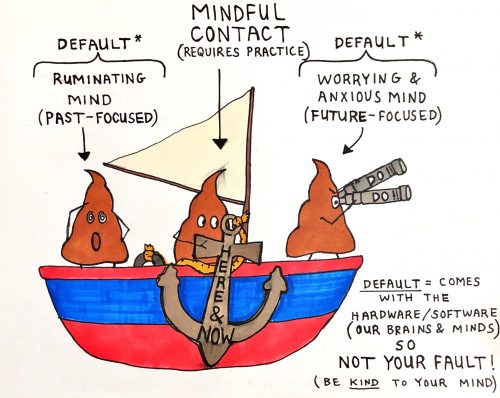
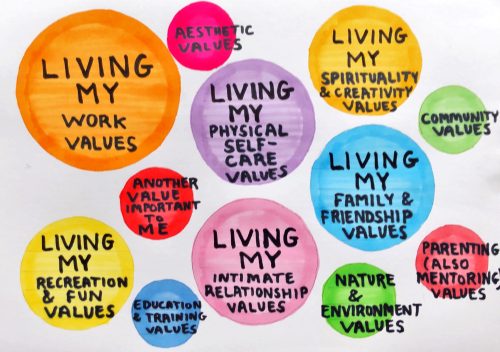
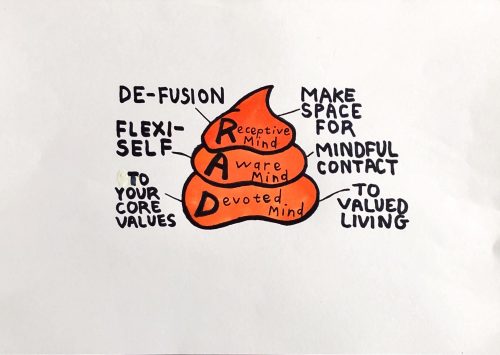
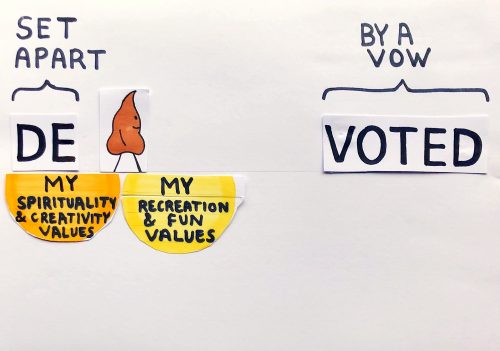
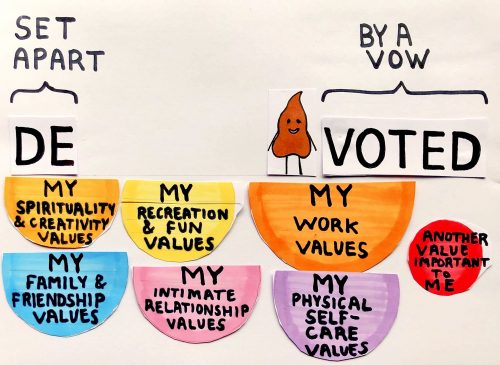
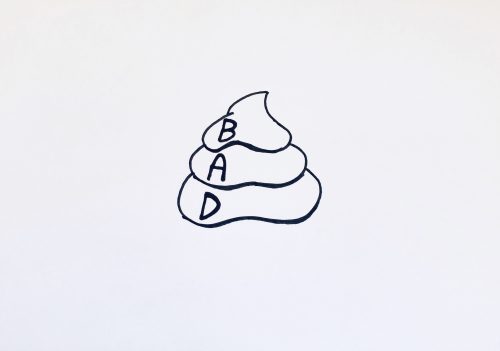
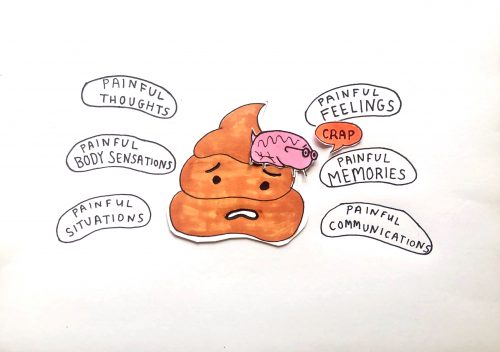
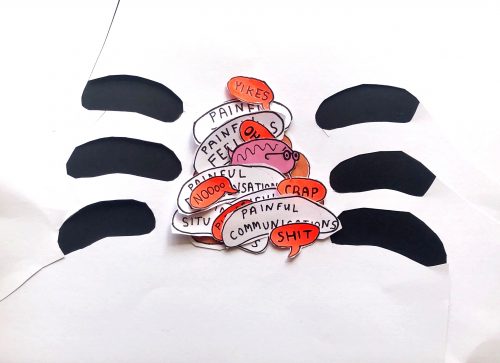
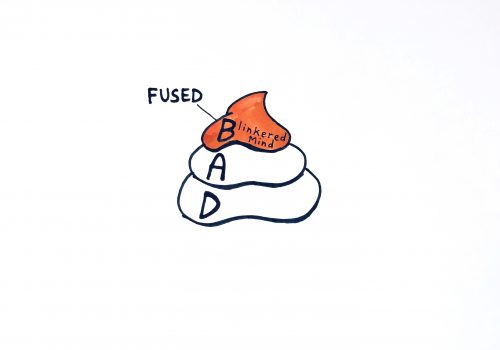 Also, because pain in any shape or form is so uh painful, our suffering Blinkered Minds will often try to avoid this pain in a very intuitive way.
Also, because pain in any shape or form is so uh painful, our suffering Blinkered Minds will often try to avoid this pain in a very intuitive way.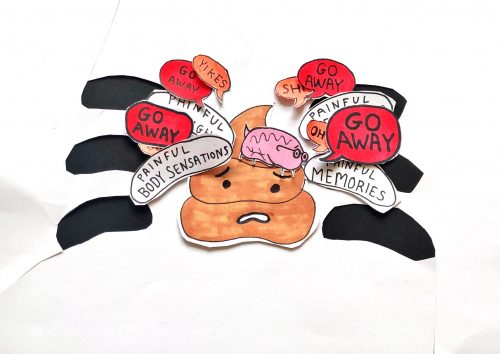
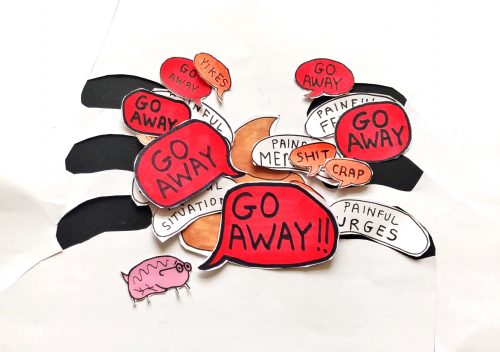
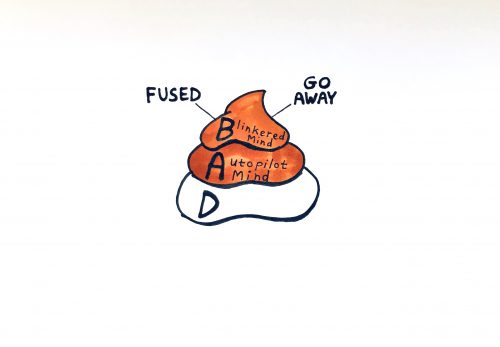
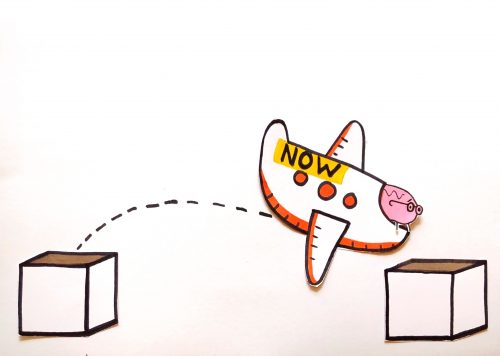
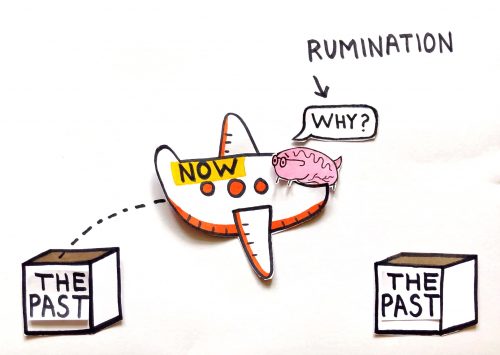
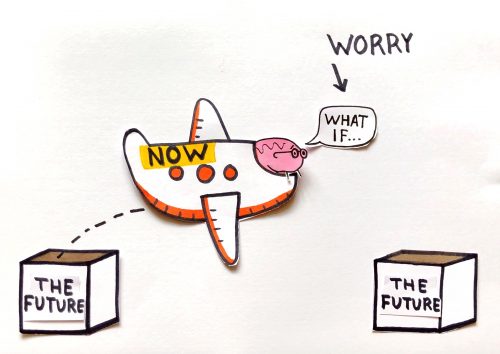
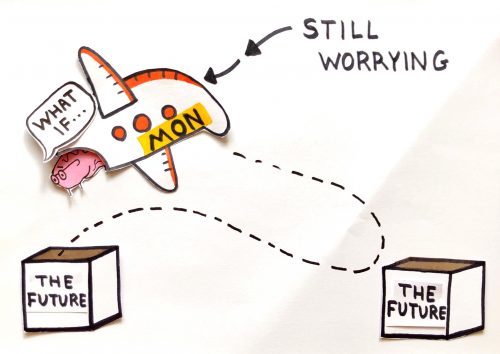
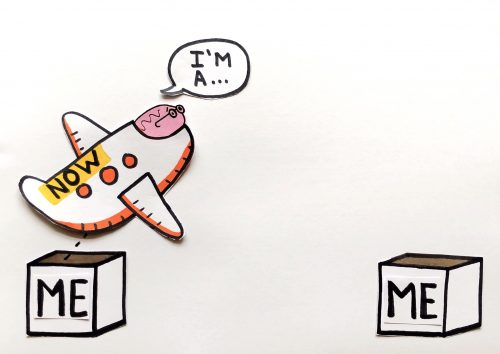
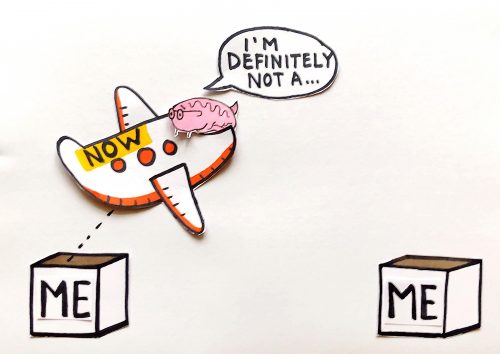
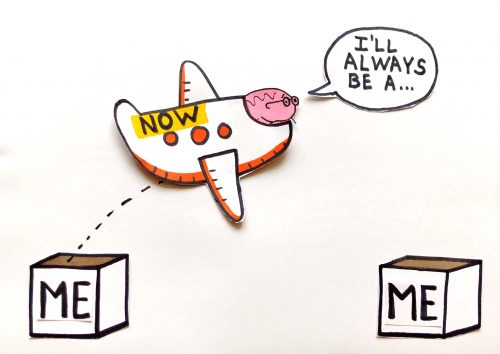
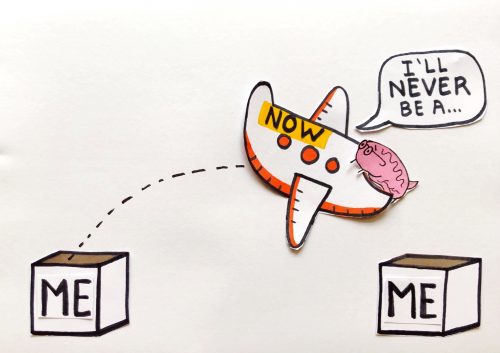
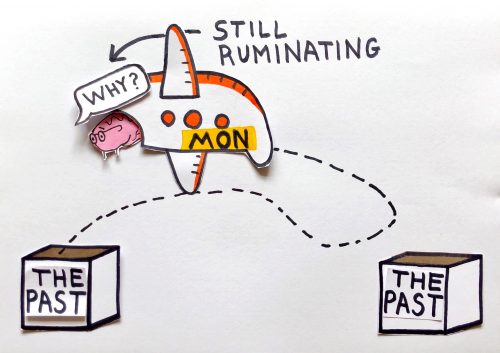
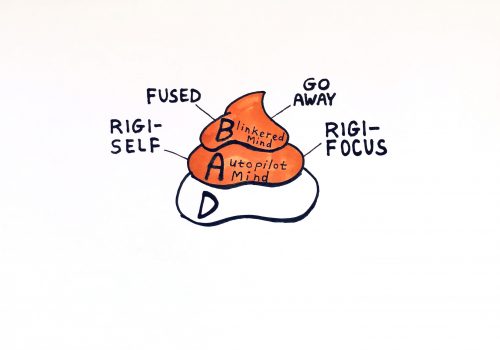
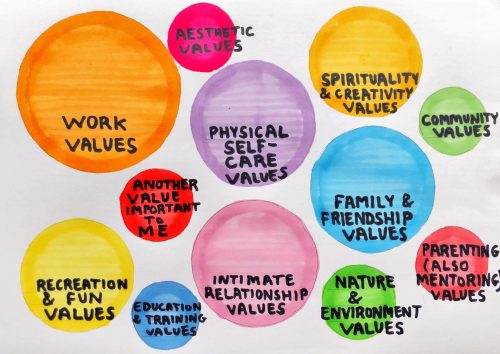
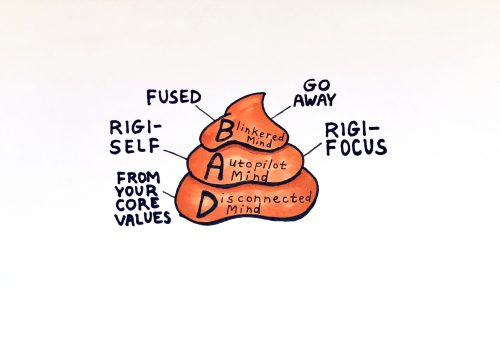
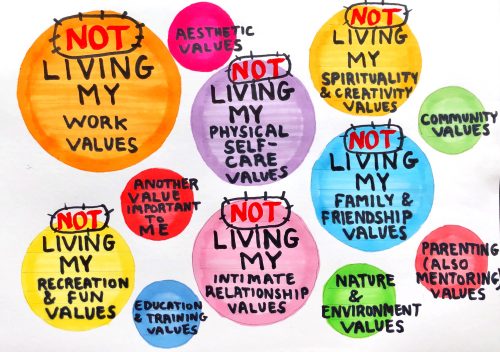
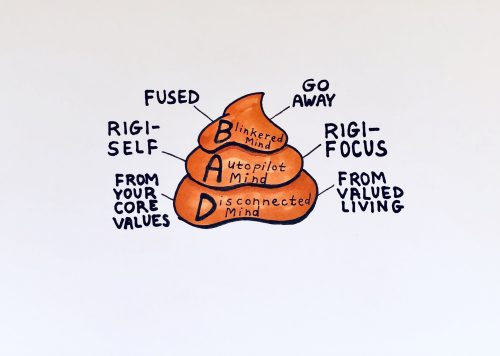

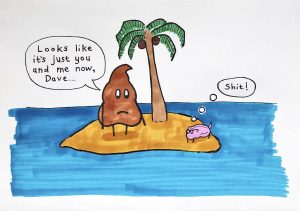
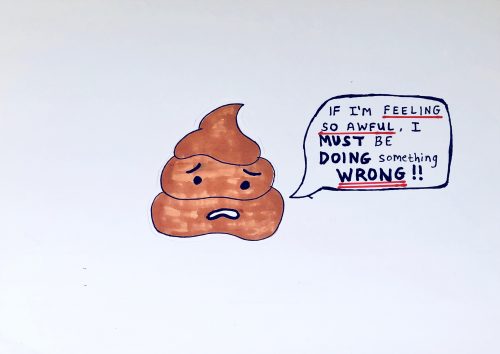
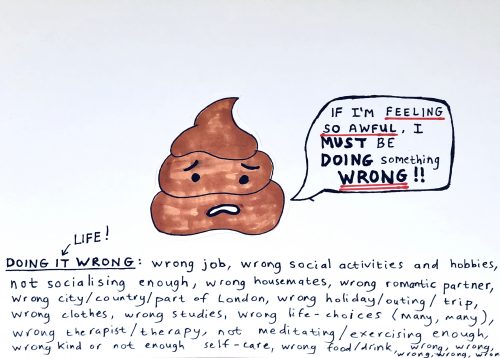
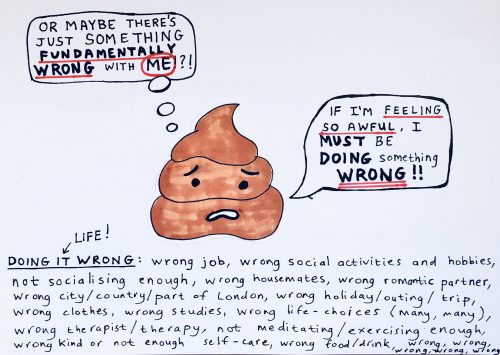
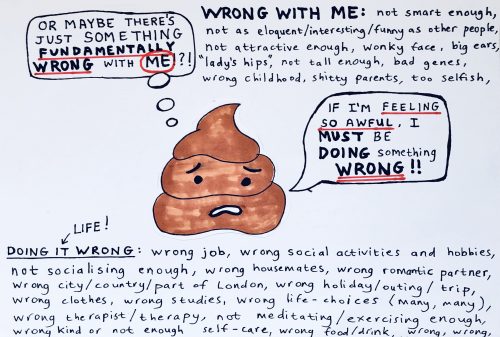



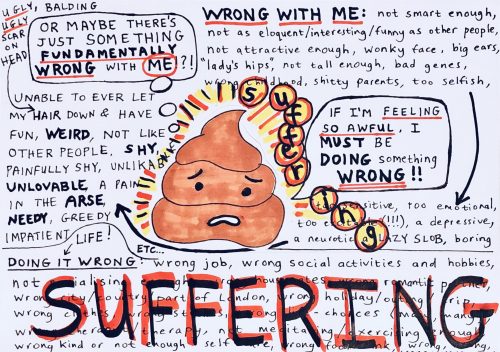
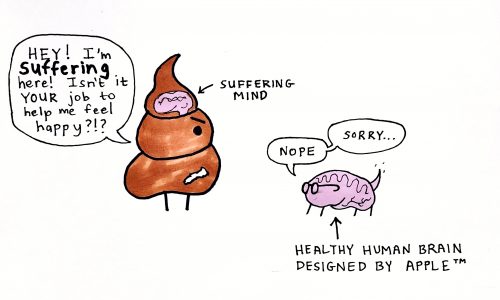 He’s right though.
He’s right though.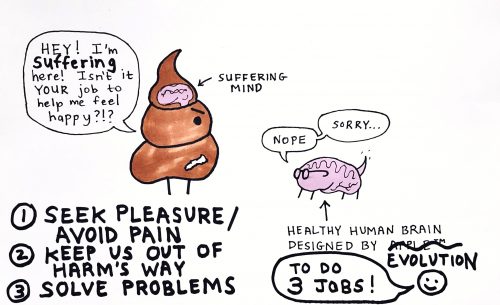
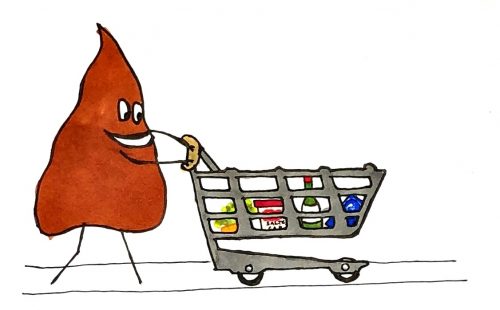 I’m also relieved to have seen and avoided my neighbour – the one I had an argument with with last week who I spotted walking down another aisle. Whew, and another dopamine hit of pleasure!
I’m also relieved to have seen and avoided my neighbour – the one I had an argument with with last week who I spotted walking down another aisle. Whew, and another dopamine hit of pleasure!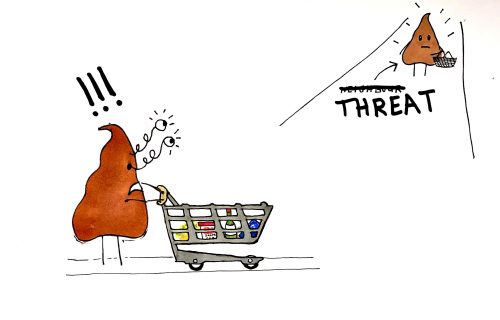 But maybe that evening I eat the whole tub of Hagen Daz as I am wont to do and drink most of the wine and feel sick and full of self-loathing.
But maybe that evening I eat the whole tub of Hagen Daz as I am wont to do and drink most of the wine and feel sick and full of self-loathing.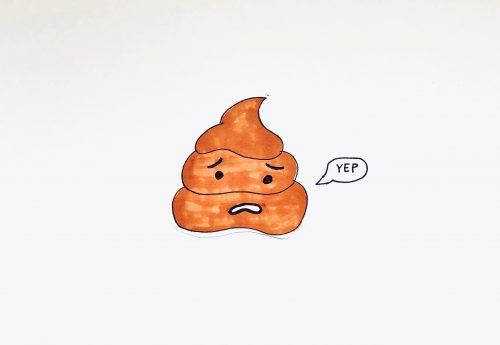
 In many ways, I love being the butt of someone’s joke, I love to be duped and fooled. Love magic tricks, especially of the Derren Brown variety that always reveal something profound to us about ourselves and others. As well as entertaining us in the process of fooling us.
In many ways, I love being the butt of someone’s joke, I love to be duped and fooled. Love magic tricks, especially of the Derren Brown variety that always reveal something profound to us about ourselves and others. As well as entertaining us in the process of fooling us. 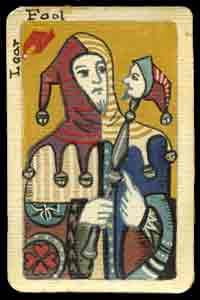 But the ultimate April Fool is the fool our minds make of us on a daily basis. Never out of pure malice – for how can a lump of meat, the brain, sitting between our ears bear malice towards us? Rather, as a function of their problem-solving, pleasure-seeking, pain-avoiding programming. Every time my mind tells me that the reason so-and-so didn’t respond to my text message is because a) they don’t care about me or what I’ve written to them, or b) they don’t fundamentally like me, or whatever other narrative they come up with, and I buy into that and suffer. Again:
But the ultimate April Fool is the fool our minds make of us on a daily basis. Never out of pure malice – for how can a lump of meat, the brain, sitting between our ears bear malice towards us? Rather, as a function of their problem-solving, pleasure-seeking, pain-avoiding programming. Every time my mind tells me that the reason so-and-so didn’t respond to my text message is because a) they don’t care about me or what I’ve written to them, or b) they don’t fundamentally like me, or whatever other narrative they come up with, and I buy into that and suffer. Again: 
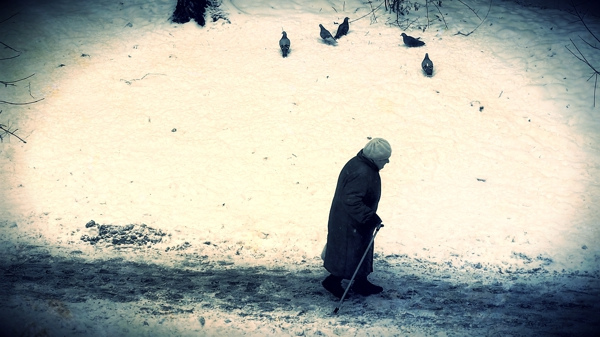
 I often talk in sessions about FUSION, and how our problem-solving minds can very quickly and easily get ‘hooked’ on an extremely painful and upsetting thoughts and beliefs.
I often talk in sessions about FUSION, and how our problem-solving minds can very quickly and easily get ‘hooked’ on an extremely painful and upsetting thoughts and beliefs. OK. I’m now going to take you through a whole stack of different defusion techniques so you can discover which ones best help you to unhook. Some of them may seem a bit weird or wacky, but please give them a go and see what happens. In each case, I’ll ask you first to fuse with the thought (i.e. buy into it, give it all your attention, believe it as much as you can), so you can get yourself well and truly hooked. Then I’ll help you to unhook again.
OK. I’m now going to take you through a whole stack of different defusion techniques so you can discover which ones best help you to unhook. Some of them may seem a bit weird or wacky, but please give them a go and see what happens. In each case, I’ll ask you first to fuse with the thought (i.e. buy into it, give it all your attention, believe it as much as you can), so you can get yourself well and truly hooked. Then I’ll help you to unhook again. You’ve probably heard the quotation, ‘The pen is mightier than the sword.’ This saying succinctly reminds us that words can have an enormous influence over our behaviour. For example, books, scriptures and manifestos can, in certain situations, shape entire nations far more powerfully than violence, bloodshed and warfare.
You’ve probably heard the quotation, ‘The pen is mightier than the sword.’ This saying succinctly reminds us that words can have an enormous influence over our behaviour. For example, books, scriptures and manifestos can, in certain situations, shape entire nations far more powerfully than violence, bloodshed and warfare. Improving our lives requires committed action. That often means learning new skills or working on old ones. And obviously, if we want to become skilful at anything, we need to practise. This goes for psychological skills as well as physical ones. We can’t develop good defusion skills without practice. And we all need these skills, because the reason-giving machine is here to stay. It’s not going to suddenly transform into your own personal cheerleader or motivational guru. It’s going to keep on telling you multiple versions of the ‘I can’t do it’ story. So are you willing to practise the techniques listed above?
Improving our lives requires committed action. That often means learning new skills or working on old ones. And obviously, if we want to become skilful at anything, we need to practise. This goes for psychological skills as well as physical ones. We can’t develop good defusion skills without practice. And we all need these skills, because the reason-giving machine is here to stay. It’s not going to suddenly transform into your own personal cheerleader or motivational guru. It’s going to keep on telling you multiple versions of the ‘I can’t do it’ story. So are you willing to practise the techniques listed above?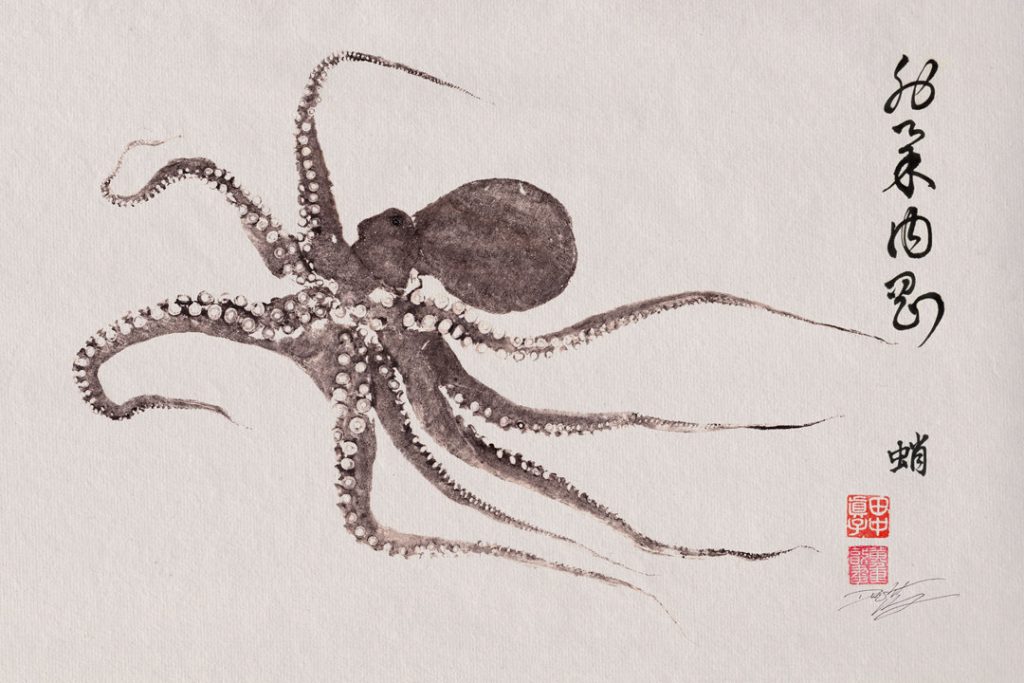
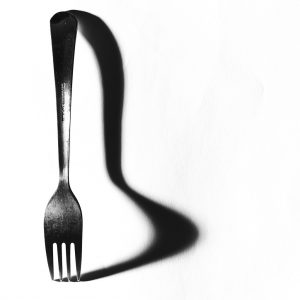 At the moment, I wake up to jackhammers and drills.
At the moment, I wake up to jackhammers and drills.  We need to skilfully differentiate between what is in our power and what is not. And that very differentiation happens to be the first thing we read about in a book of collected discourses issuing from the lips and the mind of a crippled, Roman slave named Epictetus who lived 2000 years ago. I like to imagine him as a slightly more philosophical and Latin-spouting version of
We need to skilfully differentiate between what is in our power and what is not. And that very differentiation happens to be the first thing we read about in a book of collected discourses issuing from the lips and the mind of a crippled, Roman slave named Epictetus who lived 2000 years ago. I like to imagine him as a slightly more philosophical and Latin-spouting version of 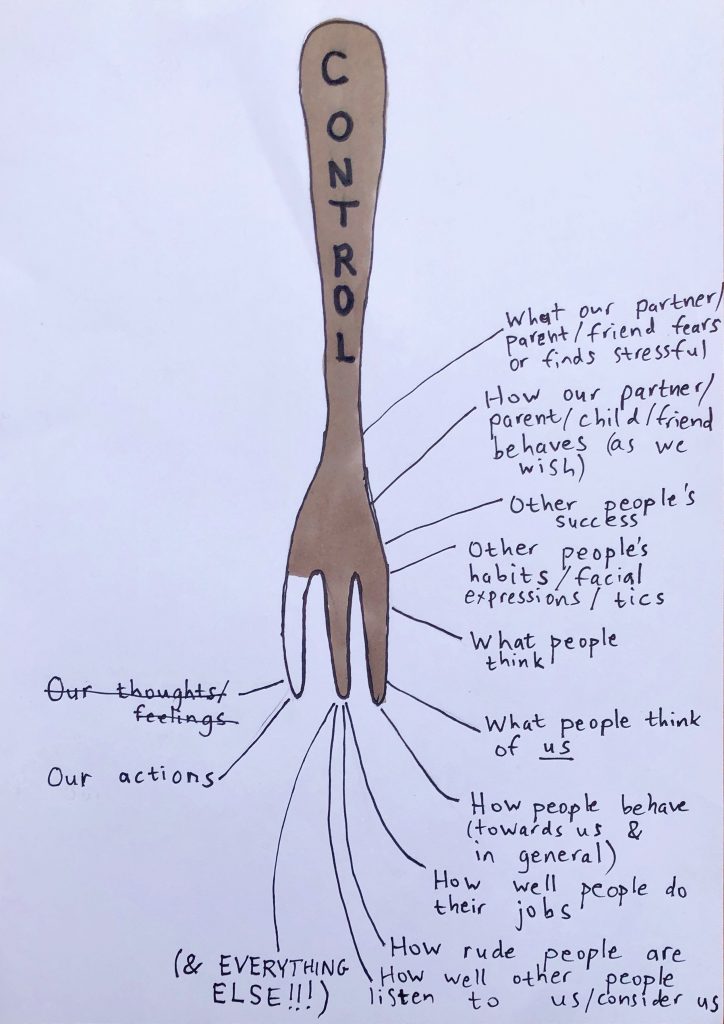

 What is the human mind? Why are we different than the birds flying outside our windows? And why do we suffer so? These kinds of questions have puzzled humankind for eons. Here are a couple of ideas that might help as you work with your own suffering in therapy.
What is the human mind? Why are we different than the birds flying outside our windows? And why do we suffer so? These kinds of questions have puzzled humankind for eons. Here are a couple of ideas that might help as you work with your own suffering in therapy.  Our minds work symbolically. The word “symbol,” comes from an ancient Greek root, “bol,” which means “to throw.” Combined with “sym” (which means “the same”), a symbol literally means “thrown as the same.” When our minds throw words at us, those words appear to be much the same as the things to which they refer. Which is why if I use the word BOLLOCKS in my punning title, your mind can’t help but see me throwing a slur on something, as well as maybe finding a pair of crude graffiti testicles surfacing in your imagination, or some other form of other mental chatter. Whatever your mind is telling you about the above title is just a story about a word that doesn’t even exist. Maybe the person writing this (me), just wanted to grab your attention through his dense exposition. But once our minds get hold of language and start relating it to other things, who knows where they might go!
Our minds work symbolically. The word “symbol,” comes from an ancient Greek root, “bol,” which means “to throw.” Combined with “sym” (which means “the same”), a symbol literally means “thrown as the same.” When our minds throw words at us, those words appear to be much the same as the things to which they refer. Which is why if I use the word BOLLOCKS in my punning title, your mind can’t help but see me throwing a slur on something, as well as maybe finding a pair of crude graffiti testicles surfacing in your imagination, or some other form of other mental chatter. Whatever your mind is telling you about the above title is just a story about a word that doesn’t even exist. Maybe the person writing this (me), just wanted to grab your attention through his dense exposition. But once our minds get hold of language and start relating it to other things, who knows where they might go! As best we can tell, the ability to derive relations like this is probably only about 75,000 to 100,000 years old, and in highly elaborated forms it is much younger than that. Written language marks a real transition in the ability to relate events in this way and it is only five- to ten-thousand-years old, depending on what you count as written symbols. By animal standards, humans are frail, slow-moving creatures. We do not have the strength of gorillas, the teeth of tigers, the speed of cheetahs, or the venom of snakes. Nevertheless, over the last 10,000 years we have taken over the planet. Why is that? There’s a strong chance that it’s got something to do with our abilities to use language.
As best we can tell, the ability to derive relations like this is probably only about 75,000 to 100,000 years old, and in highly elaborated forms it is much younger than that. Written language marks a real transition in the ability to relate events in this way and it is only five- to ten-thousand-years old, depending on what you count as written symbols. By animal standards, humans are frail, slow-moving creatures. We do not have the strength of gorillas, the teeth of tigers, the speed of cheetahs, or the venom of snakes. Nevertheless, over the last 10,000 years we have taken over the planet. Why is that? There’s a strong chance that it’s got something to do with our abilities to use language. In normal problem-solving situations, when there is something we don’t like, we figure out how to get rid of it and we take actions to do that. If we don’t like dirt on the floor, we get out the vacuum cleaner. If we don’t like a leaky roof, we fix it. The human approach to solving problems can be stated as,
In normal problem-solving situations, when there is something we don’t like, we figure out how to get rid of it and we take actions to do that. If we don’t like dirt on the floor, we get out the vacuum cleaner. If we don’t like a leaky roof, we fix it. The human approach to solving problems can be stated as,  This same process applies to emotions. If you try not to feel a bad feeling, such as pain, not only do you tend to feel it more intensely, but previously neutral events also become irritating. Any parent knows this. If the kids are irritating you by making too much noise and you are trying to ignore it, the noise just becomes more and more irritating and, eventually, even little annoyances can cause you to explode.
This same process applies to emotions. If you try not to feel a bad feeling, such as pain, not only do you tend to feel it more intensely, but previously neutral events also become irritating. Any parent knows this. If the kids are irritating you by making too much noise and you are trying to ignore it, the noise just becomes more and more irritating and, eventually, even little annoyances can cause you to explode. It’s likely you’ve been using a verbally guided “fix-it” mentality to find a solution for the causes of your suffering. If you’re reading this pages, it’s also likely that your attempts haven’t been entirely successful. The coping techniques you’ve developed to fix or counteract the pain you struggle with belong to the same class of language-based, problem-solving behaviours described in the exercises above.
It’s likely you’ve been using a verbally guided “fix-it” mentality to find a solution for the causes of your suffering. If you’re reading this pages, it’s also likely that your attempts haven’t been entirely successful. The coping techniques you’ve developed to fix or counteract the pain you struggle with belong to the same class of language-based, problem-solving behaviours described in the exercises above.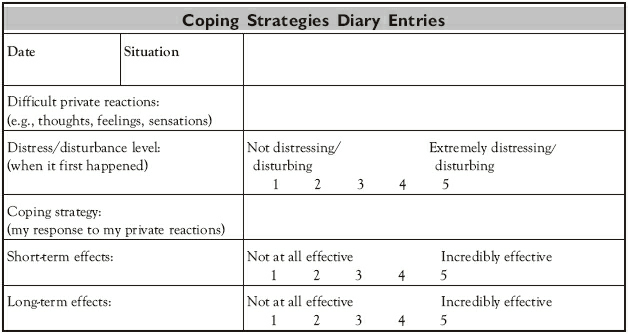
 Language creates suffering in part because it leads to experiential avoidance.Experiential avoidance is the process of trying to avoid your own experiences (thoughts, feelings, memories, bodily sensations, behavioral predispositions) even when doing so causes long-term behavioral difficulties (like not going to a party because you’re a social phobic, or not exercising because you feel too depressed to get out of bed). Of all the psychological processes known to science, experiential avoidance is one of the worst.
Language creates suffering in part because it leads to experiential avoidance.Experiential avoidance is the process of trying to avoid your own experiences (thoughts, feelings, memories, bodily sensations, behavioral predispositions) even when doing so causes long-term behavioral difficulties (like not going to a party because you’re a social phobic, or not exercising because you feel too depressed to get out of bed). Of all the psychological processes known to science, experiential avoidance is one of the worst. In your review of your worksheet, you may have found that your scores in the “Short-term effectiveness” column are relatively high, while your scores in the “Long-term effectiveness” column are relatively low. This is a dangerous trap because short-term effects are far more reinforcing than long-term effects, and these problem-solving strategies do work in most areas of life for a short time. The coping techniques you’ve developed to combat your anger, anxiety, or depression probably do cause these feelings to go away for a short while; otherwise, you wouldn’t engage in them. But how powerful is the long-term effect? How much do your coping strategies really change your condition in the long run?
In your review of your worksheet, you may have found that your scores in the “Short-term effectiveness” column are relatively high, while your scores in the “Long-term effectiveness” column are relatively low. This is a dangerous trap because short-term effects are far more reinforcing than long-term effects, and these problem-solving strategies do work in most areas of life for a short time. The coping techniques you’ve developed to combat your anger, anxiety, or depression probably do cause these feelings to go away for a short while; otherwise, you wouldn’t engage in them. But how powerful is the long-term effect? How much do your coping strategies really change your condition in the long run? Unfortunately, these processes are not easy to control because they are so tightly linked to our normal use of language. People tend to “live in their minds,” that is, to engage with the world on the basis of these verbal processes. Living in your mind can be likened to riding a train. A train has its own tracks and it goes where they lead. That’s fine when the tracks are going where you want to go. But if you were traveling in the direction you want to be going, you probably would never have stopped to read this page. If the life you want to live is “off the tracks,” then you have only one option: you must learn how to get off the train and onto another track…at least sometimes.
Unfortunately, these processes are not easy to control because they are so tightly linked to our normal use of language. People tend to “live in their minds,” that is, to engage with the world on the basis of these verbal processes. Living in your mind can be likened to riding a train. A train has its own tracks and it goes where they lead. That’s fine when the tracks are going where you want to go. But if you were traveling in the direction you want to be going, you probably would never have stopped to read this page. If the life you want to live is “off the tracks,” then you have only one option: you must learn how to get off the train and onto another track…at least sometimes. When were feeling bad and wanting to feel better, perhaps the most important distinction we can make for ourselves is in keeping clear the difference between pain and suffering. The difference can be summarised in the following adage which you may have come across at some point:
When were feeling bad and wanting to feel better, perhaps the most important distinction we can make for ourselves is in keeping clear the difference between pain and suffering. The difference can be summarised in the following adage which you may have come across at some point:  Maybe an example will help. I hate needles. I’m probably not alone in this, but at times this aversion has verged on a kind of phobia. And like any phobia, it has often got in the way of me doing the things I need to do to take care of myself. Like going to the dentist for regular check-ups. In fact, I didn’t go to the dentist from 2010-2017, because…I hate needles! Following on from that rule I’ve set for myself (Thou shall hate needles!) I didn’t go to the dentist until the pain of toothache overcame my unwillingness to tolerate the pain of a needle being pushed into my gums.
Maybe an example will help. I hate needles. I’m probably not alone in this, but at times this aversion has verged on a kind of phobia. And like any phobia, it has often got in the way of me doing the things I need to do to take care of myself. Like going to the dentist for regular check-ups. In fact, I didn’t go to the dentist from 2010-2017, because…I hate needles! Following on from that rule I’ve set for myself (Thou shall hate needles!) I didn’t go to the dentist until the pain of toothache overcame my unwillingness to tolerate the pain of a needle being pushed into my gums.  Let’s look at how suffering works. My problem with needles is, if I really think carefully about it, a Suffering Problem, rather than a pain one.
Let’s look at how suffering works. My problem with needles is, if I really think carefully about it, a Suffering Problem, rather than a pain one. Here’s how I suffer, and perhaps this is how you suffer too. I take the pain of your dismissal, the pain of you not being sensitive to my anxiety, of not validating me and my issues with needles, and I add stuff to that. The stuff I add (often unconsciously) is Suffering.
Here’s how I suffer, and perhaps this is how you suffer too. I take the pain of your dismissal, the pain of you not being sensitive to my anxiety, of not validating me and my issues with needles, and I add stuff to that. The stuff I add (often unconsciously) is Suffering.  I suffer because my mind/brain is “designed” to try and solve internal problems the way it solves external ones. If your front door is jamming, you look at the problem, diagnose why the door is jamming, and then come up with a solution to fix it. The only problem is that internal, existential, emotional issues, don’t respond to our brains Jim-Will-Fix- It strategies in the same way. This is because the most sophisticated technology we have for “fixing” our internal problems or pain is with something called language! All those thoughts, beliefs, internal conversations and monologues, memories, beating ourselves up, threatening to beat others up, could not occur without language. We’re very particular in this way.
I suffer because my mind/brain is “designed” to try and solve internal problems the way it solves external ones. If your front door is jamming, you look at the problem, diagnose why the door is jamming, and then come up with a solution to fix it. The only problem is that internal, existential, emotional issues, don’t respond to our brains Jim-Will-Fix- It strategies in the same way. This is because the most sophisticated technology we have for “fixing” our internal problems or pain is with something called language! All those thoughts, beliefs, internal conversations and monologues, memories, beating ourselves up, threatening to beat others up, could not occur without language. We’re very particular in this way.  So how do we experience as “cleanly” as possible whatever dose of psychological or physical pain that is next coming our way without getting trapped into having a double dose of suffering alongside it? Here’s a five step process which is easy to do and remember. But it does require practice, until it becomes second nature. Which is where the acronym helps.
So how do we experience as “cleanly” as possible whatever dose of psychological or physical pain that is next coming our way without getting trapped into having a double dose of suffering alongside it? Here’s a five step process which is easy to do and remember. But it does require practice, until it becomes second nature. Which is where the acronym helps.  Think of something a situation or a conversation you had with someone, or just something ongoing in your life that is causing you pain. Make a note of your pain on a piece of paper or on your phone.
Think of something a situation or a conversation you had with someone, or just something ongoing in your life that is causing you pain. Make a note of your pain on a piece of paper or on your phone.  In this step, you set the intention to allow yourself to feel some of this pain without reaching for the jar of suffering to start slathering all extra pain on top. Think for a moment how willing are you right now (out of 10) to just experience the pain as it is, without any additional thoughts, analysis, or “stories” about the pain?
In this step, you set the intention to allow yourself to feel some of this pain without reaching for the jar of suffering to start slathering all extra pain on top. Think for a moment how willing are you right now (out of 10) to just experience the pain as it is, without any additional thoughts, analysis, or “stories” about the pain? In step three, you offer understanding and compassion to yourself for
In step three, you offer understanding and compassion to yourself for  Of course your brain will probably ignore you and keep on spinning its stories. So you then make another gentle note of how the invitation to suffer is being delivered in the shape of a THOUGHT, an IMAGE/VIDEO, an INTERNAL CONVERSATION or MONOLOGUE, a MEMORY, or INTENTION, and then once again, you say: ENOUGH! STOP!
Of course your brain will probably ignore you and keep on spinning its stories. So you then make another gentle note of how the invitation to suffer is being delivered in the shape of a THOUGHT, an IMAGE/VIDEO, an INTERNAL CONVERSATION or MONOLOGUE, a MEMORY, or INTENTION, and then once again, you say: ENOUGH! STOP! Sometimes, when my brain is really set on suffering, and I’m doing something which doesn’t require my full attention, so that my brain can focus entirely on the suffering story, I might need to note and say stop/enough again and again and again. The STOP is especially important when our Suffering Minds are trying to get us to carry out some Actions (revenge, rebuttal, rehash). A Suffering Mind is so skilled at finding ways to convince us that writing an angry email or text will really help us to suffer less, that often, before we know it, we end up doing the very thing that will only make us suffer more. In my experience, lashing out and blaming another human being for the ways they have triggered in me pain, only makes me suffer more. Because then I have to deal with either the anxiety of how they will respond, or the unpleasantness of their defensive words, or whatever their Suffering Brain spins the story to try and make it better for themselves.
Sometimes, when my brain is really set on suffering, and I’m doing something which doesn’t require my full attention, so that my brain can focus entirely on the suffering story, I might need to note and say stop/enough again and again and again. The STOP is especially important when our Suffering Minds are trying to get us to carry out some Actions (revenge, rebuttal, rehash). A Suffering Mind is so skilled at finding ways to convince us that writing an angry email or text will really help us to suffer less, that often, before we know it, we end up doing the very thing that will only make us suffer more. In my experience, lashing out and blaming another human being for the ways they have triggered in me pain, only makes me suffer more. Because then I have to deal with either the anxiety of how they will respond, or the unpleasantness of their defensive words, or whatever their Suffering Brain spins the story to try and make it better for themselves. 

 There’s a wonderful poem by Mary Oliver where she talks about pain, suffering, and our relation to it.
There’s a wonderful poem by Mary Oliver where she talks about pain, suffering, and our relation to it. If you kick a dog, it will yelp and run away. If you kick it regularly, any sign of your arrival eventually will produce fear and avoidance behavior in the dog by means of the process called “conditioning.” But so long as you are out of the picture and are not likely to arrive, the dog is unlikely to feel or show significant anxiety. People are quite different. As young as sixteen months or even earlier, human infants learn that if an object has a name, the name refers to the object. So what, you might say?
If you kick a dog, it will yelp and run away. If you kick it regularly, any sign of your arrival eventually will produce fear and avoidance behavior in the dog by means of the process called “conditioning.” But so long as you are out of the picture and are not likely to arrive, the dog is unlikely to feel or show significant anxiety. People are quite different. As young as sixteen months or even earlier, human infants learn that if an object has a name, the name refers to the object. So what, you might say? Psychological pain hurts, by definition. But it does more than that. Often pain holds you back from living the kind of life you want to live. There is no question that a person with a panic disorder would rather not experience the feeling of extreme fear, because it is so unpleasant. But that discomfort is compounded by the fact that the panic seemingly gets in the way of living itself.
Psychological pain hurts, by definition. But it does more than that. Often pain holds you back from living the kind of life you want to live. There is no question that a person with a panic disorder would rather not experience the feeling of extreme fear, because it is so unpleasant. But that discomfort is compounded by the fact that the panic seemingly gets in the way of living itself. As soon as Charlie sits down, I can tell that he’s feeling a little bit “off” today.
As soon as Charlie sits down, I can tell that he’s feeling a little bit “off” today.  I am listening to
I am listening to  “There is no reason to be miserable in one’s free time when the possibility of matching challenges and skills is under one’s own control and is not limited by the obligatory parameters of work. Yet, at present, most leisure time is filled with activities that do not make people feel happy or strong.”
“There is no reason to be miserable in one’s free time when the possibility of matching challenges and skills is under one’s own control and is not limited by the obligatory parameters of work. Yet, at present, most leisure time is filled with activities that do not make people feel happy or strong.”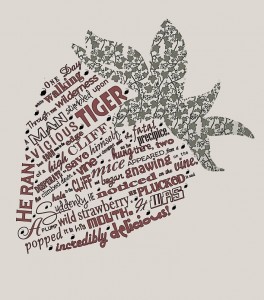 I have for many years been haunted by a Zen parable about a man being chased by a tiger. Here it is in full:
I have for many years been haunted by a Zen parable about a man being chased by a tiger. Here it is in full: The character in this Zen fable models different forms of acceptance. There is the
The character in this Zen fable models different forms of acceptance. There is the  Recently I’ve been thinking about the word “grant” in the Serenity Prayer. “God,
Recently I’ve been thinking about the word “grant” in the Serenity Prayer. “God,  What Gail is struggling to accept, and she is not alone in this, is desire and longing: for a partner, for more light in a day, for consumer goods that don’t come with an environmental price tag. “From the urgent way lovers want each other to the seeker’s search for truth, all moving is from the mover,” writes Rumi. “Every pull draws us to the ocean.” And what does the ocean desire, other than to be, and to be fully itself, expressive of itself, inhabiting the space it needs to inhabit? This is a primal desire, and one which moves everything in existence, including us. The same universal force of attraction that gathers atoms into molecules and holds solar systems spinning in galaxies also joins sperm with eggs and makes us swipe left and right on each other on our dating apps.
What Gail is struggling to accept, and she is not alone in this, is desire and longing: for a partner, for more light in a day, for consumer goods that don’t come with an environmental price tag. “From the urgent way lovers want each other to the seeker’s search for truth, all moving is from the mover,” writes Rumi. “Every pull draws us to the ocean.” And what does the ocean desire, other than to be, and to be fully itself, expressive of itself, inhabiting the space it needs to inhabit? This is a primal desire, and one which moves everything in existence, including us. The same universal force of attraction that gathers atoms into molecules and holds solar systems spinning in galaxies also joins sperm with eggs and makes us swipe left and right on each other on our dating apps. The Latin root of the word desire, “desidus,” means “away from a star.” One way to interpret this is that stars are the energetic source of all life and an expression of pure awareness. This aliveness and wakefulness is what we long for most deeply—we long to belong to our star, to realize our own true nature. Yet because our desires habitually narrow and fixate on what by nature passes away, we feel “away from our star,” away from the life, awareness and love that is the essence of who we are. Feeling apart from the source of our being, we identify ourselves with our wants and with the ways that we try to satisfy them.
The Latin root of the word desire, “desidus,” means “away from a star.” One way to interpret this is that stars are the energetic source of all life and an expression of pure awareness. This aliveness and wakefulness is what we long for most deeply—we long to belong to our star, to realize our own true nature. Yet because our desires habitually narrow and fixate on what by nature passes away, we feel “away from our star,” away from the life, awareness and love that is the essence of who we are. Feeling apart from the source of our being, we identify ourselves with our wants and with the ways that we try to satisfy them. Willa Cather tells us, “There is only one big thing—desire. And before it, when it is big, all is little.” We can honour desire as a life force, but still see how it causes suffering when it takes over our life. Our natural hunger for food can become an ungovernable craving for food—ice cream, sweets, potato chips—comfort food or food to numb our feelings. Our longing for sex and affection can become an anguished dependency on another human being to define and please us. Our need for shelter and clothing can turn into insatiable greed, compelling us to possess three houses and closets full of unworn shoes. Our fundamental longing to belong and feel loved becomes an insistent craving for substitutes.
Willa Cather tells us, “There is only one big thing—desire. And before it, when it is big, all is little.” We can honour desire as a life force, but still see how it causes suffering when it takes over our life. Our natural hunger for food can become an ungovernable craving for food—ice cream, sweets, potato chips—comfort food or food to numb our feelings. Our longing for sex and affection can become an anguished dependency on another human being to define and please us. Our need for shelter and clothing can turn into insatiable greed, compelling us to possess three houses and closets full of unworn shoes. Our fundamental longing to belong and feel loved becomes an insistent craving for substitutes.
 Hadley and Hayley, both in their late-40s, met on a dating app. They chatted on the phone about beets and their shared appreciation of Dan Savage, and soon were spending as much time as they could together. They would speak on the phone almost every night, text each other throughout the day. Both of them would often announce to the other how fortunate they felt for having met.
Hadley and Hayley, both in their late-40s, met on a dating app. They chatted on the phone about beets and their shared appreciation of Dan Savage, and soon were spending as much time as they could together. They would speak on the phone almost every night, text each other throughout the day. Both of them would often announce to the other how fortunate they felt for having met. 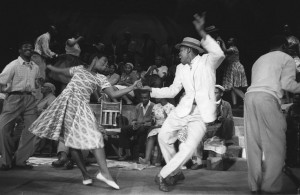 One way of understanding what happened between Hadley and Hayley is to return to the psychoanalytic concept of
One way of understanding what happened between Hadley and Hayley is to return to the psychoanalytic concept of 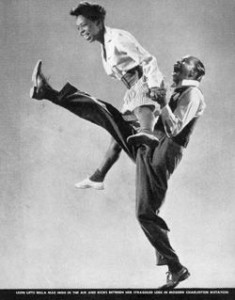 What we see happening with Hadley and Hayley, and indeed with all couples, are times when one or both experience some serious bumping of V-spots. This is Lachkar’s term for our most sensitive area of emotional vulnerability, tantamount to an archaic injury that becomes aroused when one’s partner hits an emotional raw spot.
What we see happening with Hadley and Hayley, and indeed with all couples, are times when one or both experience some serious bumping of V-spots. This is Lachkar’s term for our most sensitive area of emotional vulnerability, tantamount to an archaic injury that becomes aroused when one’s partner hits an emotional raw spot.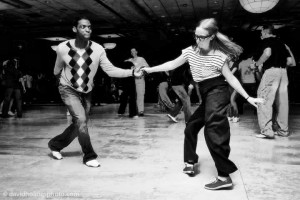 I often prescribe Derek Walcott’s “
I often prescribe Derek Walcott’s “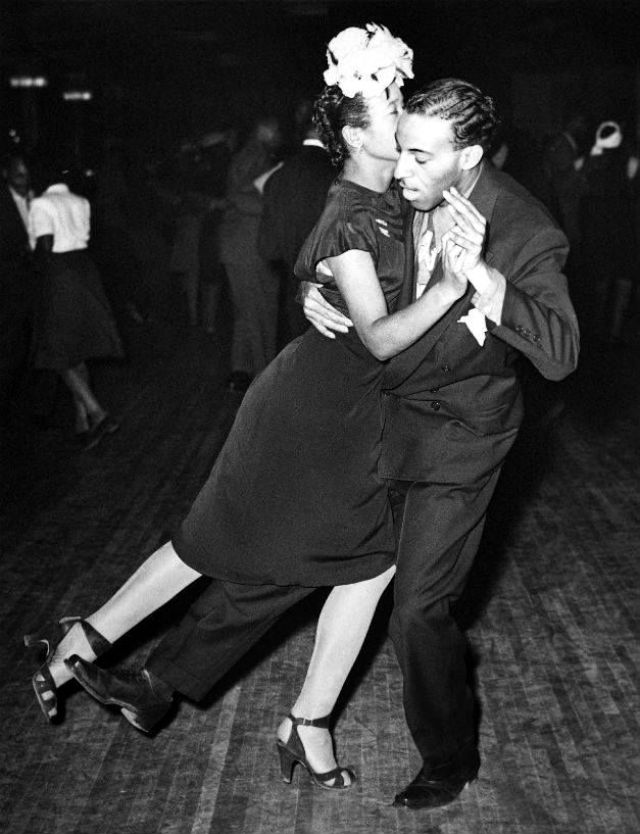
 What I’m calling the blahs may be the blues, or maybe a cousin of the blues. It presents itself as a general abatement of interest, gratification, and faith in the offerings of the world. It is a state in which the monotony of equivalence holds sway. Roethke
What I’m calling the blahs may be the blues, or maybe a cousin of the blues. It presents itself as a general abatement of interest, gratification, and faith in the offerings of the world. It is a state in which the monotony of equivalence holds sway. Roethke 
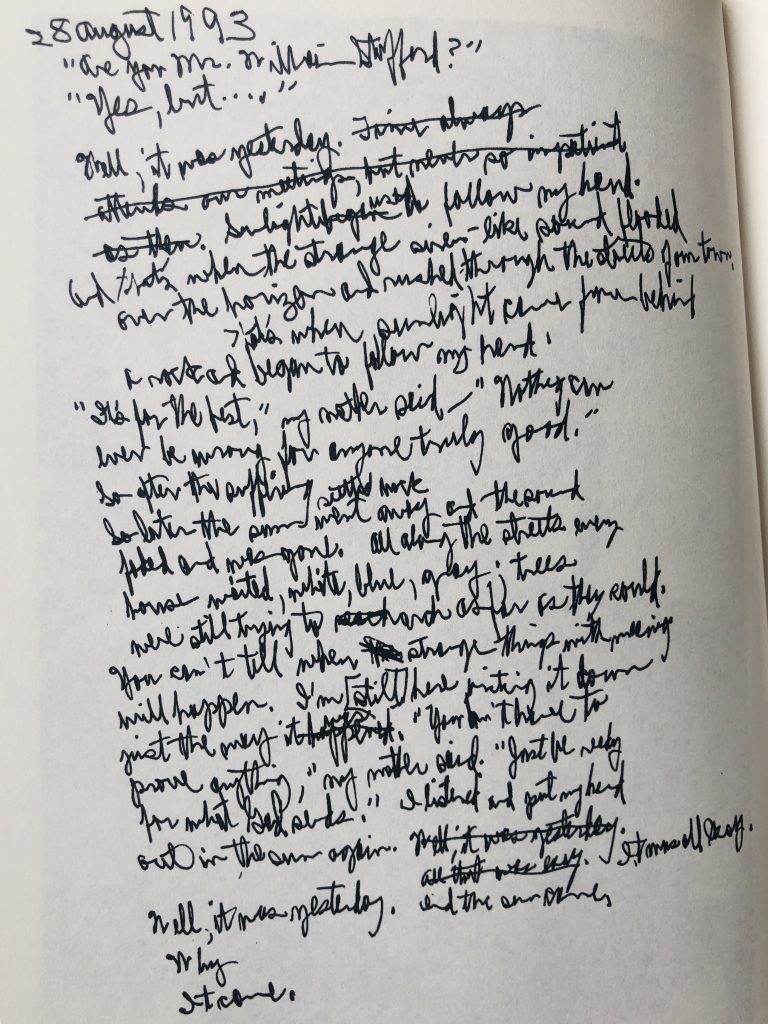
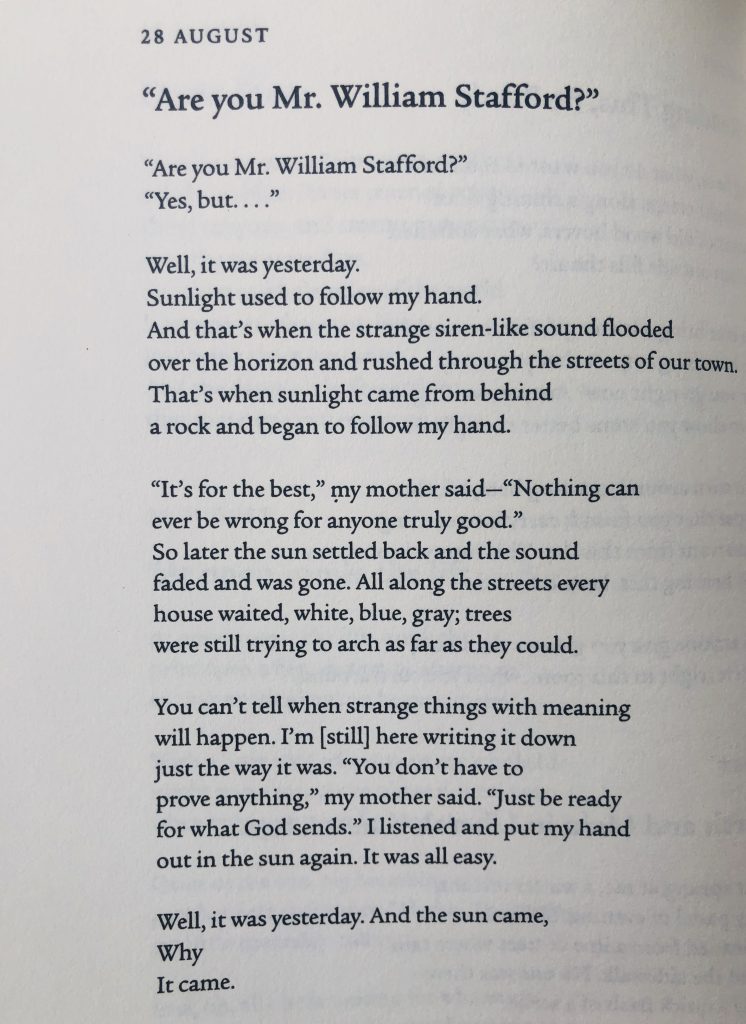
 Because we are pleasure-seeking, pain-avoiding creatures, for most of us, there is going to be something in our lives, maybe even a series of things that we develop a somewhat addictive relationship with.
Because we are pleasure-seeking, pain-avoiding creatures, for most of us, there is going to be something in our lives, maybe even a series of things that we develop a somewhat addictive relationship with.
 The next time you are assailed by an addictive thought, or urge (“If I don’t go and get a glass of wine in me as soon as I finish work today, I’m done for!”) here’s something you might like to try.
The next time you are assailed by an addictive thought, or urge (“If I don’t go and get a glass of wine in me as soon as I finish work today, I’m done for!”) here’s something you might like to try.


 Two books which have been useful to me in this consideration are Marie Kondo’s Spark Joy and a Shoukei Matsumoto’s Guide to a Clean House and Mind. As ever, cheeky John Crace has taken the mick out of both titles in his
Two books which have been useful to me in this consideration are Marie Kondo’s Spark Joy and a Shoukei Matsumoto’s Guide to a Clean House and Mind. As ever, cheeky John Crace has taken the mick out of both titles in his  Remnick’s Interview with Leonard Cohen a few months before his death: https://www.newyorker.com/culture/culture-desk/leonard-cohen-a-final-interview
Remnick’s Interview with Leonard Cohen a few months before his death: https://www.newyorker.com/culture/culture-desk/leonard-cohen-a-final-interview My own heart let me more have pity on; let
My own heart let me more have pity on; let How does this work? Building on the research of Richard Davidson, and Jaak Panksepp, key to understanding the power of De Profundis prayers or poems lies in grasping the basic emotional circuitry shared by every mammal from humans to rats.
How does this work? Building on the research of Richard Davidson, and Jaak Panksepp, key to understanding the power of De Profundis prayers or poems lies in grasping the basic emotional circuitry shared by every mammal from humans to rats. What comes out of this poem is the necessity for what our current healing practitioners, aka science-ratified psychologists, might call Dialogue Based Mindfulness, which is also a key aspect to many therapeutic practices like Schema Therapy or Internal Family Systems.
What comes out of this poem is the necessity for what our current healing practitioners, aka science-ratified psychologists, might call Dialogue Based Mindfulness, which is also a key aspect to many therapeutic practices like Schema Therapy or Internal Family Systems.

 Here’s the chief problem with Mind-Dumps as far as I can tell. Often the content of what we’re sharing in therapy are thoughts that we have had a hundred, if not a thousand times before. And maybe even shared before with other therapists, or family and friends.
Here’s the chief problem with Mind-Dumps as far as I can tell. Often the content of what we’re sharing in therapy are thoughts that we have had a hundred, if not a thousand times before. And maybe even shared before with other therapists, or family and friends.


 Perhaps before your next session, see where your mind is at with regard to what it needs from the session itself. If it needs to just wander around and do some pain-driven pirouettes and triple Lutzes in the hope of expending some of the suffering energy of your mind out into the room, into someone else’s ears, someone else’s mind, let’s do that!
Perhaps before your next session, see where your mind is at with regard to what it needs from the session itself. If it needs to just wander around and do some pain-driven pirouettes and triple Lutzes in the hope of expending some of the suffering energy of your mind out into the room, into someone else’s ears, someone else’s mind, let’s do that!



 The shadow-side of patience is procrastination. A form of forestalment, with all the discomfort of inertia, torpidity, but none of the dopamine-fuelled incentivizers. As Hesiod, one of the earliest writers on the subject gravely remarks: “a man who puts off work is always at hand-grips with ruin”. Yes, sometimes, it really does feel like that.
The shadow-side of patience is procrastination. A form of forestalment, with all the discomfort of inertia, torpidity, but none of the dopamine-fuelled incentivizers. As Hesiod, one of the earliest writers on the subject gravely remarks: “a man who puts off work is always at hand-grips with ruin”. Yes, sometimes, it really does feel like that. All things come to he who waits, is not entirely true. Even the Victorian poet Violet Fane who coined the phrase feels the need to qualify it in the next line of her poem:
All things come to he who waits, is not entirely true. Even the Victorian poet Violet Fane who coined the phrase feels the need to qualify it in the next line of her poem: Why did I ever doubt I’d get flowers from Jenny?
Why did I ever doubt I’d get flowers from Jenny?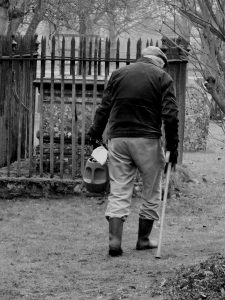 If you don’t water your plants carefully and consistently, especially those not embedded in earth, but exiled in pots and planters, they’ll soon let you know, becoming pallid, etiolated husks of their former selves. Take this poor wilty tomatillo plant on the left that greeted me a few mornings back: not a happy camper.
If you don’t water your plants carefully and consistently, especially those not embedded in earth, but exiled in pots and planters, they’ll soon let you know, becoming pallid, etiolated husks of their former selves. Take this poor wilty tomatillo plant on the left that greeted me a few mornings back: not a happy camper.
 If you’re a Gardener’s World fan, you probably tune in as much to see what a Golden Retriever called Nigel is up to at Longmeadow (mostly activities involving tennis balls) as what his owner Monty Don might be planting that week.
If you’re a Gardener’s World fan, you probably tune in as much to see what a Golden Retriever called Nigel is up to at Longmeadow (mostly activities involving tennis balls) as what his owner Monty Don might be planting that week. The
The  Every day, the hundreds of fronds that make up the lettuce in my raised beds launch into a Lactuca Sativa version of that 80s stadium anthem by Simple Minds:
Every day, the hundreds of fronds that make up the lettuce in my raised beds launch into a Lactuca Sativa version of that 80s stadium anthem by Simple Minds: Having done a bit of a U-turn recently on the Cottage Garden ethos of ornamentals and edibles cheek by jowl, I’ve been clearing some sunny 3ft x 5 ft beds in the front garden with the express purpose of filling them with plants that’ll give me dizzying, eye-popping, heart-pumping highs.
Having done a bit of a U-turn recently on the Cottage Garden ethos of ornamentals and edibles cheek by jowl, I’ve been clearing some sunny 3ft x 5 ft beds in the front garden with the express purpose of filling them with plants that’ll give me dizzying, eye-popping, heart-pumping highs. Anxiety is a complex emotional response that’s similar to fear. Both arise from similar brain processes and cause similar physiological and behavioral reactions; both originate in portions of the brain designed to help all animals deal with danger.
Anxiety is a complex emotional response that’s similar to fear. Both arise from similar brain processes and cause similar physiological and behavioral reactions; both originate in portions of the brain designed to help all animals deal with danger.
 You do not have to be good.
You do not have to be good.



 The first question my supervisor always asks me when I am discussing with her someone that I’m working with is: “What gets them out of bed in the morning?” Sometimes she rephrases this as: “What might get them out of bed in the morning?”
The first question my supervisor always asks me when I am discussing with her someone that I’m working with is: “What gets them out of bed in the morning?” Sometimes she rephrases this as: “What might get them out of bed in the morning?” Thinking of therapy as a journey is a handy analogy. Imagine heading out on a ten mile hike, as I often do on the weekends. One of my favourite routes, also because it is so close to where I live is
Thinking of therapy as a journey is a handy analogy. Imagine heading out on a ten mile hike, as I often do on the weekends. One of my favourite routes, also because it is so close to where I live is  Life-Goals sound very grand, but I have yet to find a term that sums these up more diminutively. I do think we need to bring in the word “life” here however, denoting as it does, a whole span of living:
Life-Goals sound very grand, but I have yet to find a term that sums these up more diminutively. I do think we need to bring in the word “life” here however, denoting as it does, a whole span of living:  Yearnings are a little bit more nebulous and maybe harder to catch hold of. These are universal, but often stem from unconscious drives that push us in a certain direction, even if the direction we choose is sometimes not the best one for us.
Yearnings are a little bit more nebulous and maybe harder to catch hold of. These are universal, but often stem from unconscious drives that push us in a certain direction, even if the direction we choose is sometimes not the best one for us. Most interestingly I find, though not suprising if you consider the social nature of our species, is that almost all the things we envy most come back to Connection & Belonging in one way or another. I might be writing a book (or a blog post) for myself, to get my ideas in order (Yearning for Coherence and Understanding, Yearning for Meaning & Self-Direction) but there are very few writers who don’t aspire to having at least one pair of eyes other than their own to read what they’ve written. And hopefully, in an appreciative way (Yearning for Feeling), maybe even thinking: “Blimey, this Steve, seems to know his stuff!” (Yearning for Competence).
Most interestingly I find, though not suprising if you consider the social nature of our species, is that almost all the things we envy most come back to Connection & Belonging in one way or another. I might be writing a book (or a blog post) for myself, to get my ideas in order (Yearning for Coherence and Understanding, Yearning for Meaning & Self-Direction) but there are very few writers who don’t aspire to having at least one pair of eyes other than their own to read what they’ve written. And hopefully, in an appreciative way (Yearning for Feeling), maybe even thinking: “Blimey, this Steve, seems to know his stuff!” (Yearning for Competence).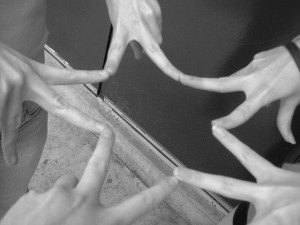

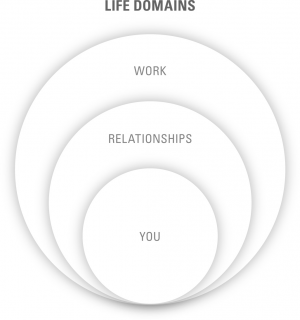
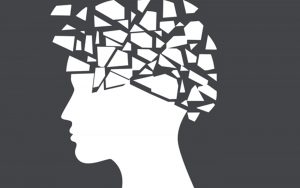 Another reason for doing a LIFE MOT is the presence of trauma in our lives, and the recognition of how that (at times) both hinders as well as ultimately may benefit us.
Another reason for doing a LIFE MOT is the presence of trauma in our lives, and the recognition of how that (at times) both hinders as well as ultimately may benefit us. So here’s how you would go about applying a happiness/well-being lens to the life you’re living at the moment.
So here’s how you would go about applying a happiness/well-being lens to the life you’re living at the moment.